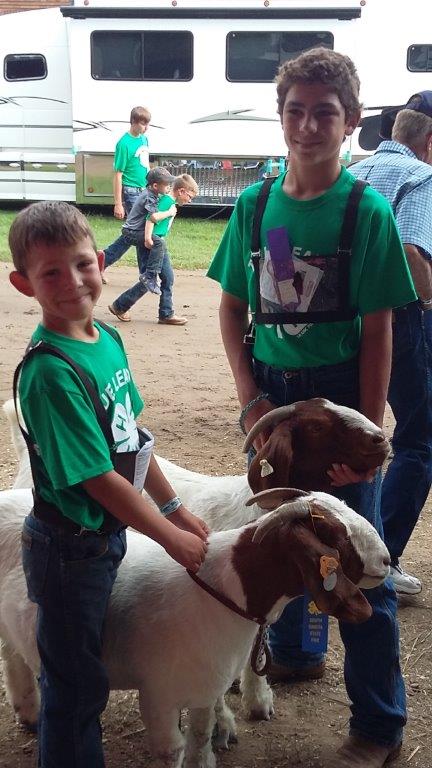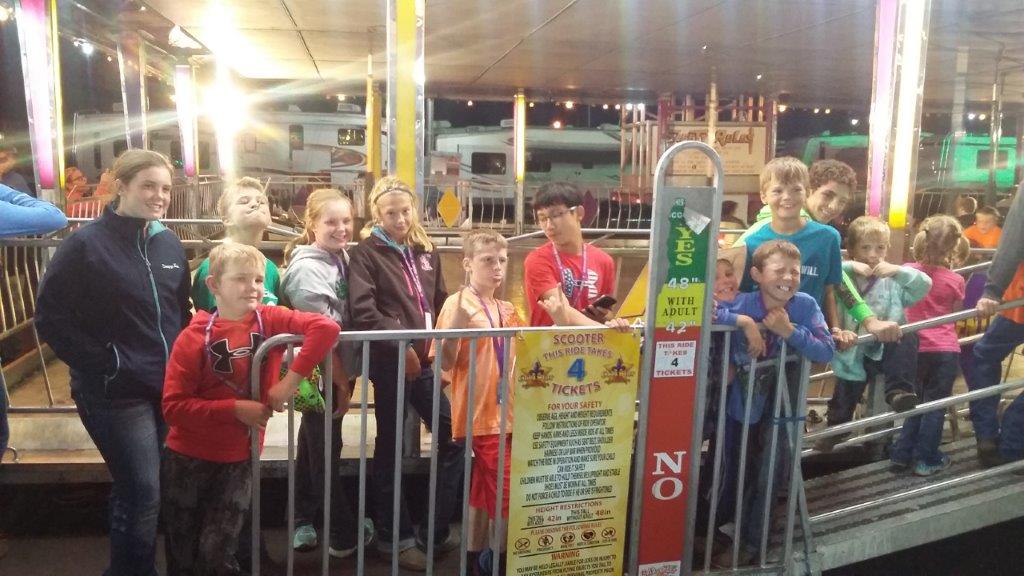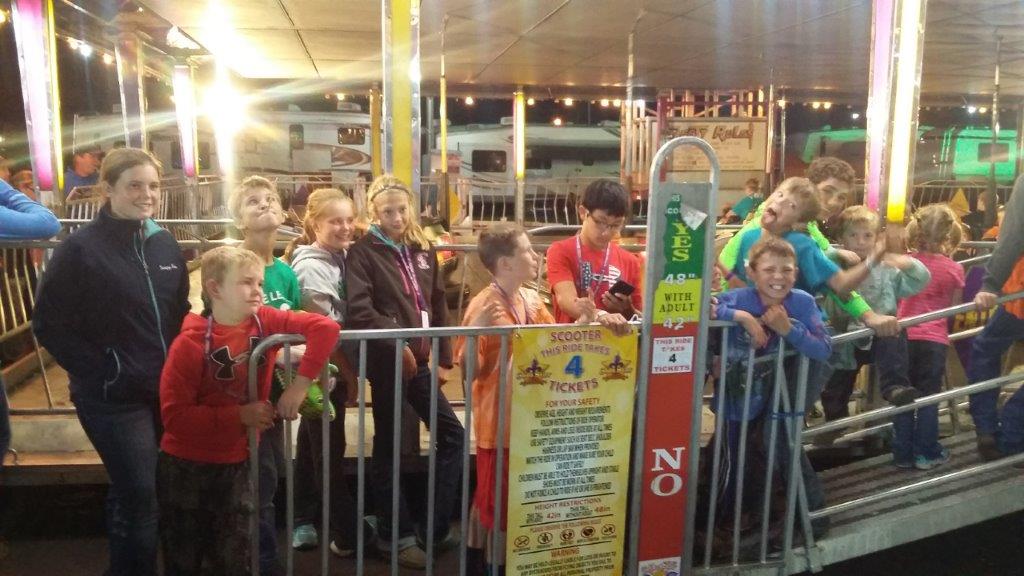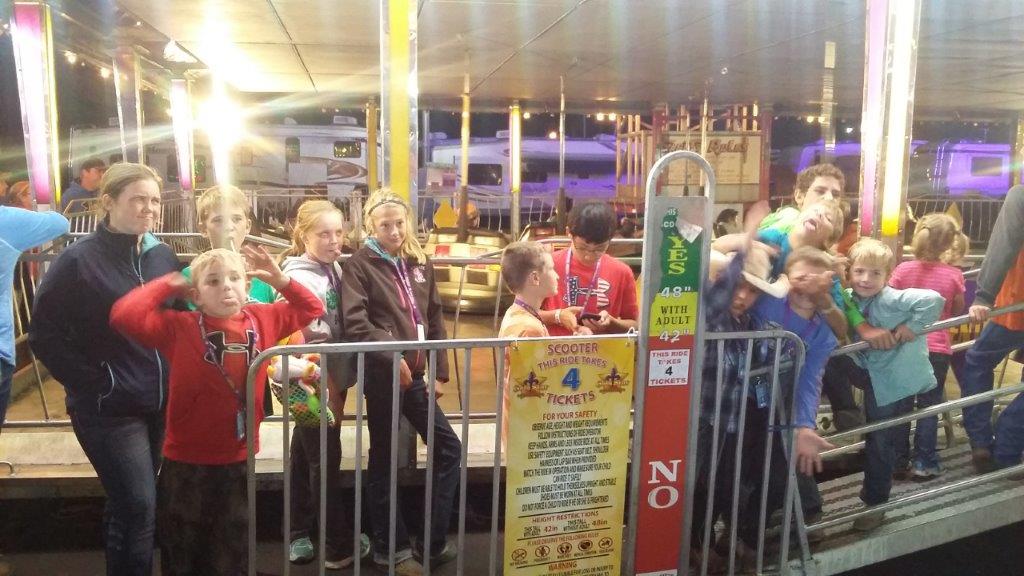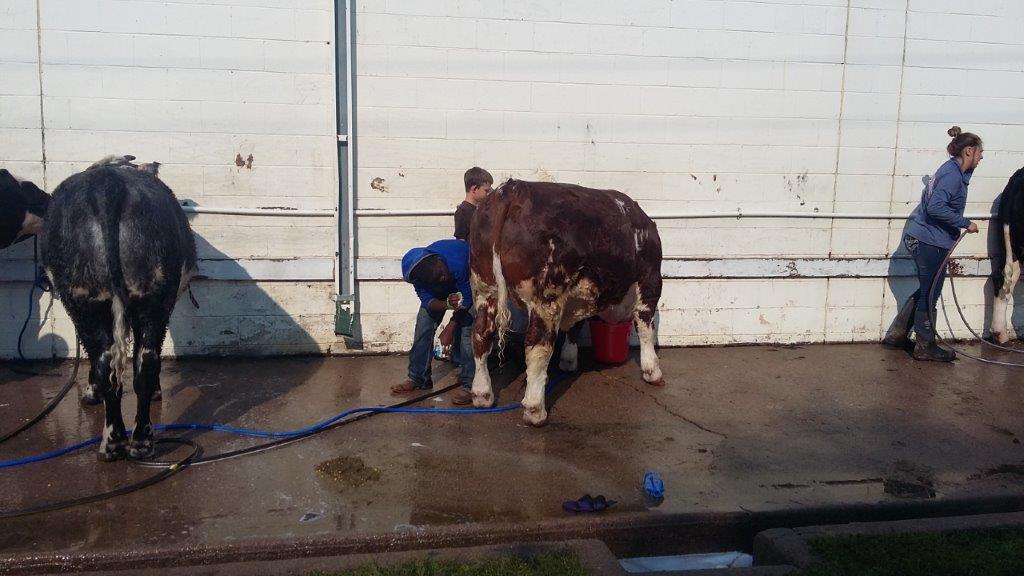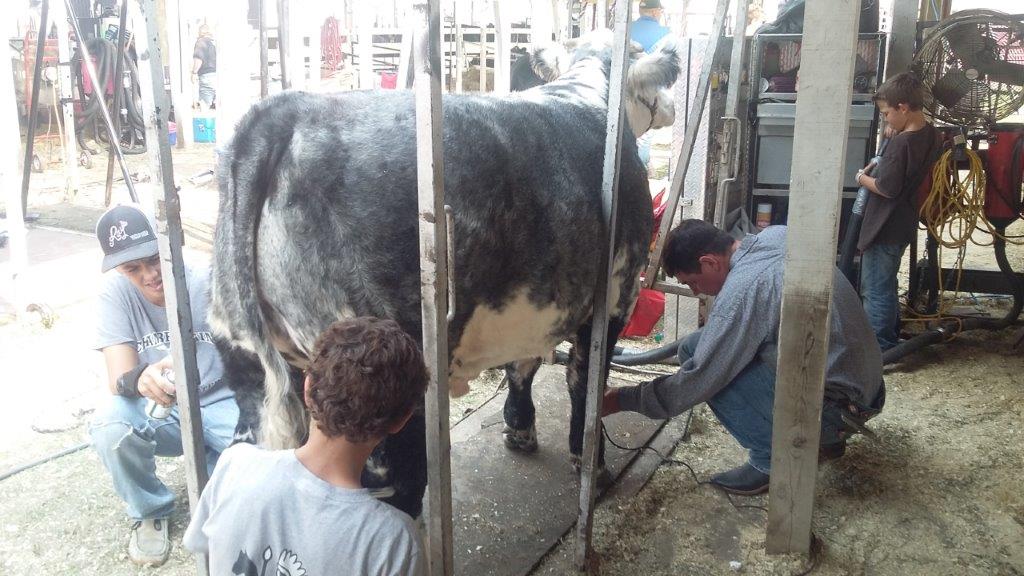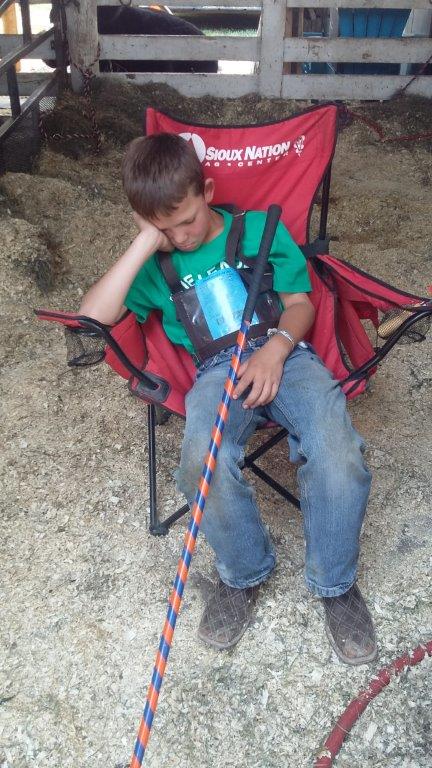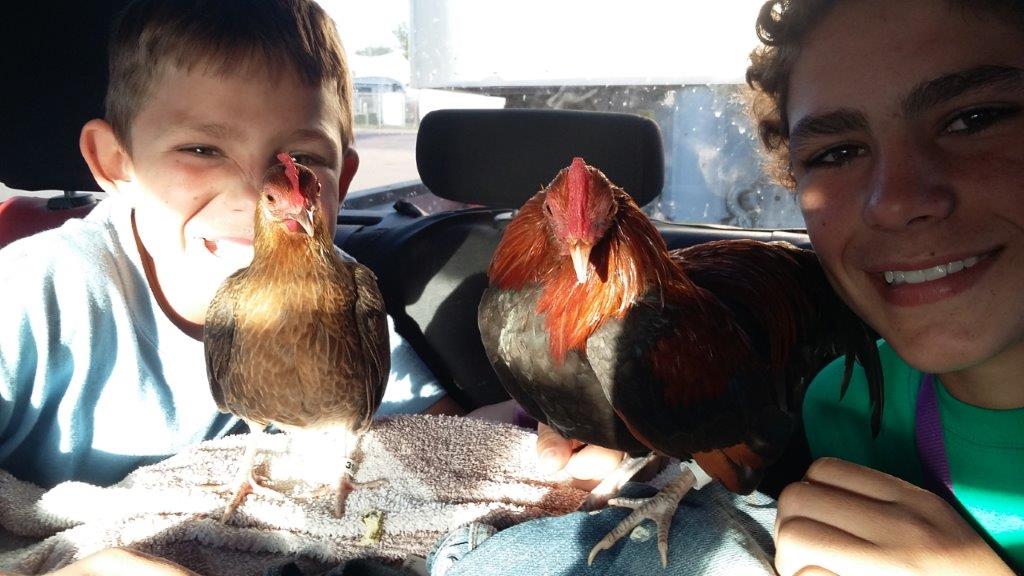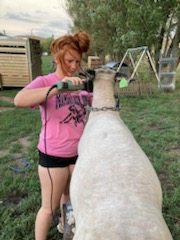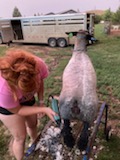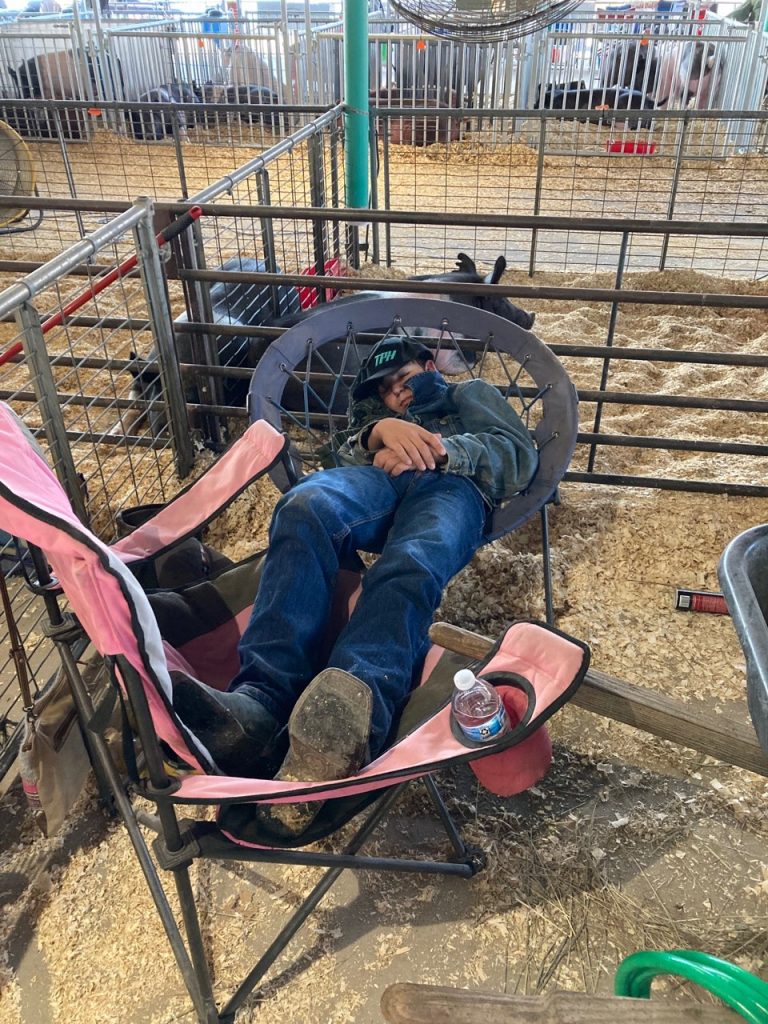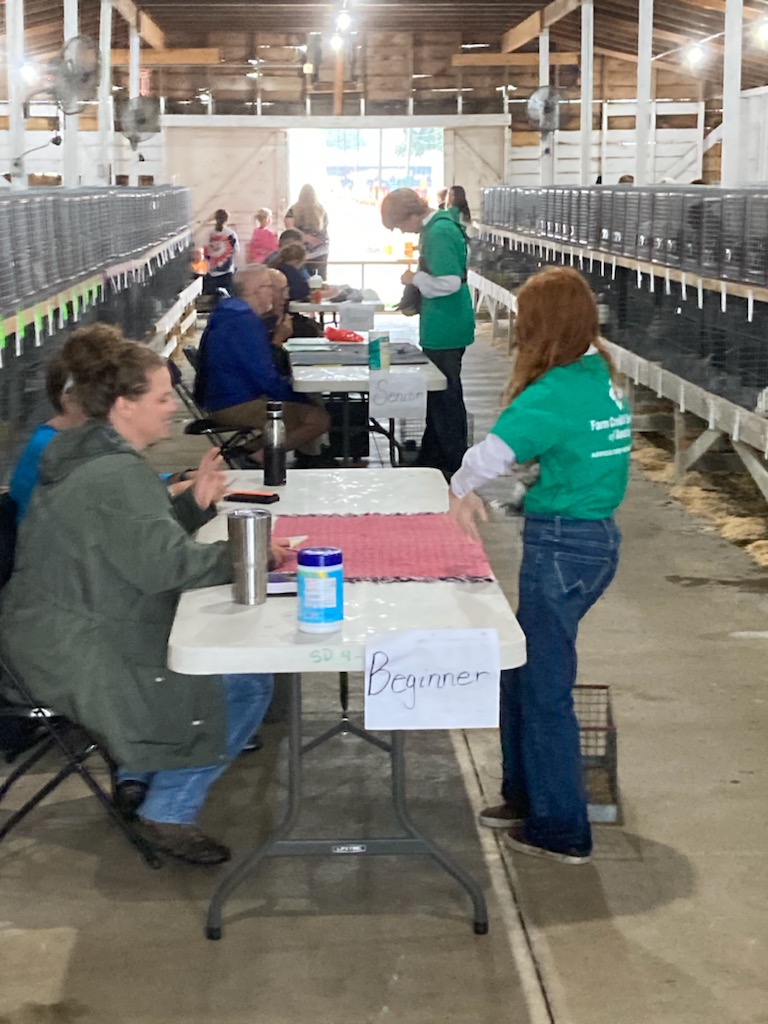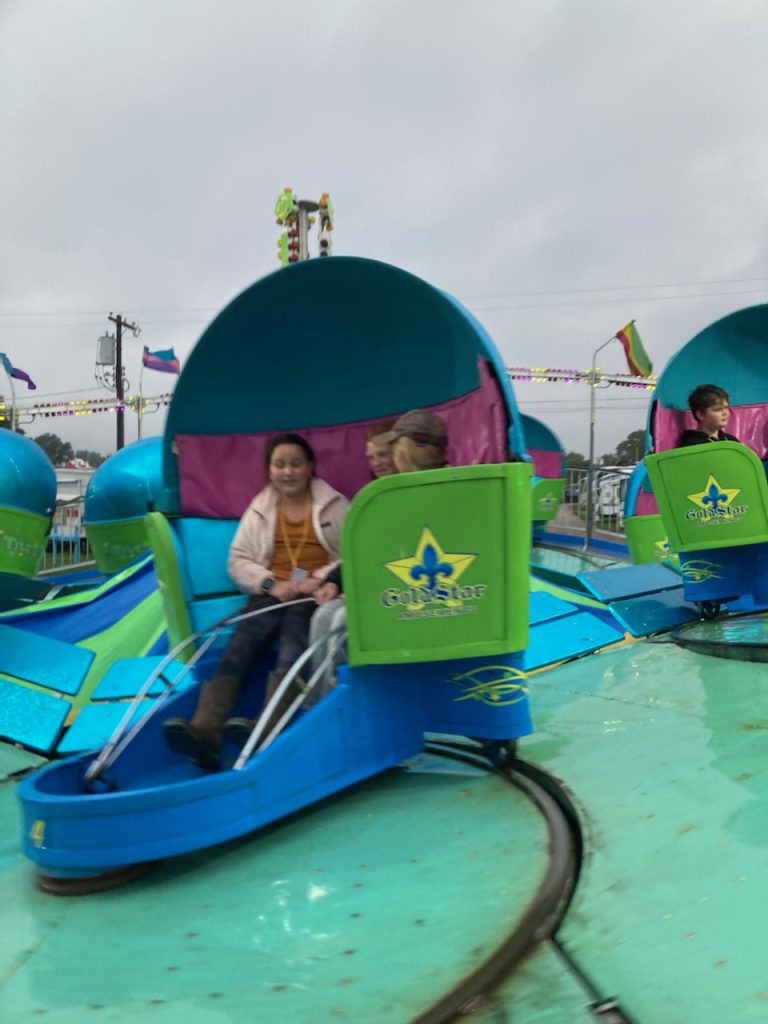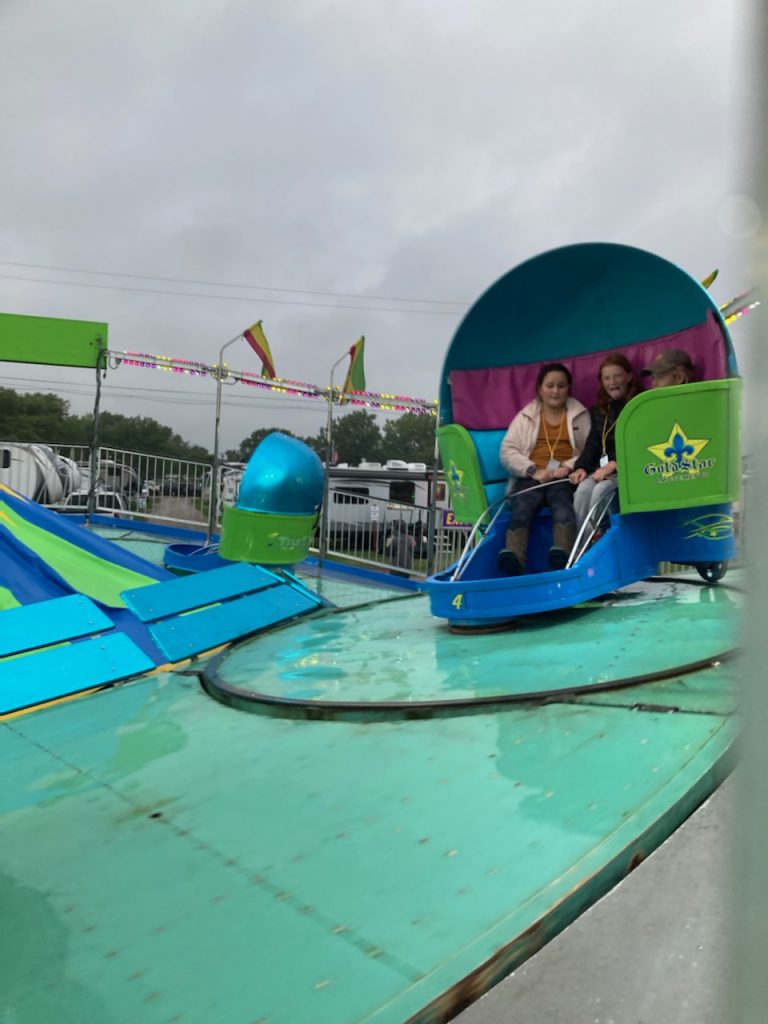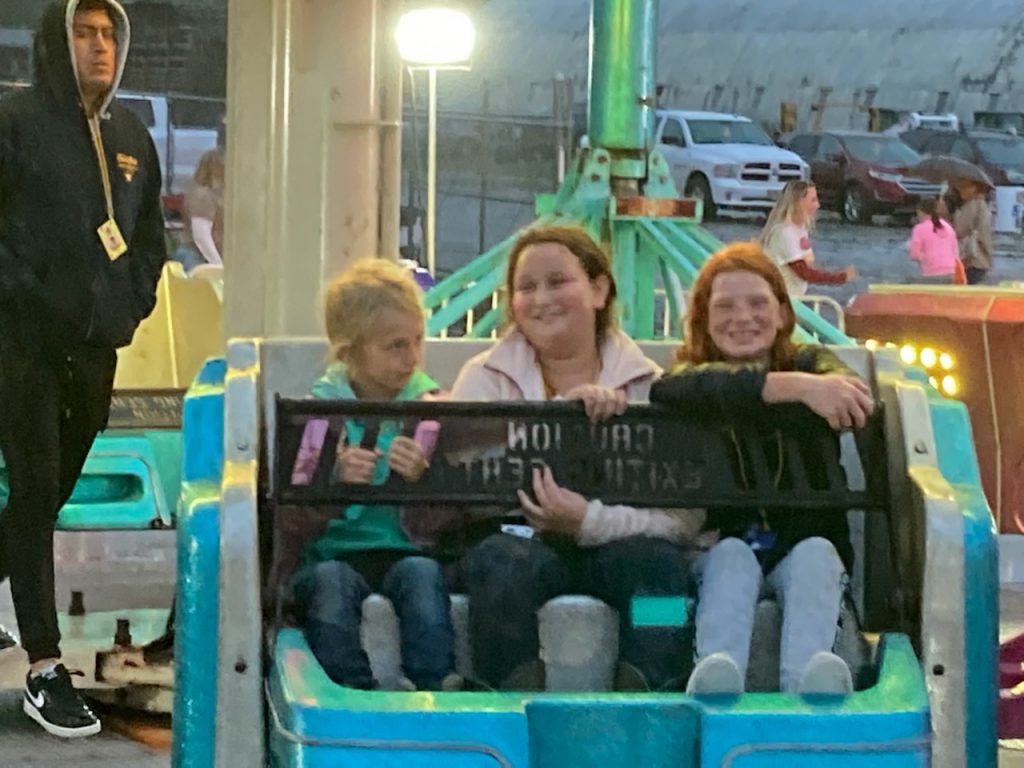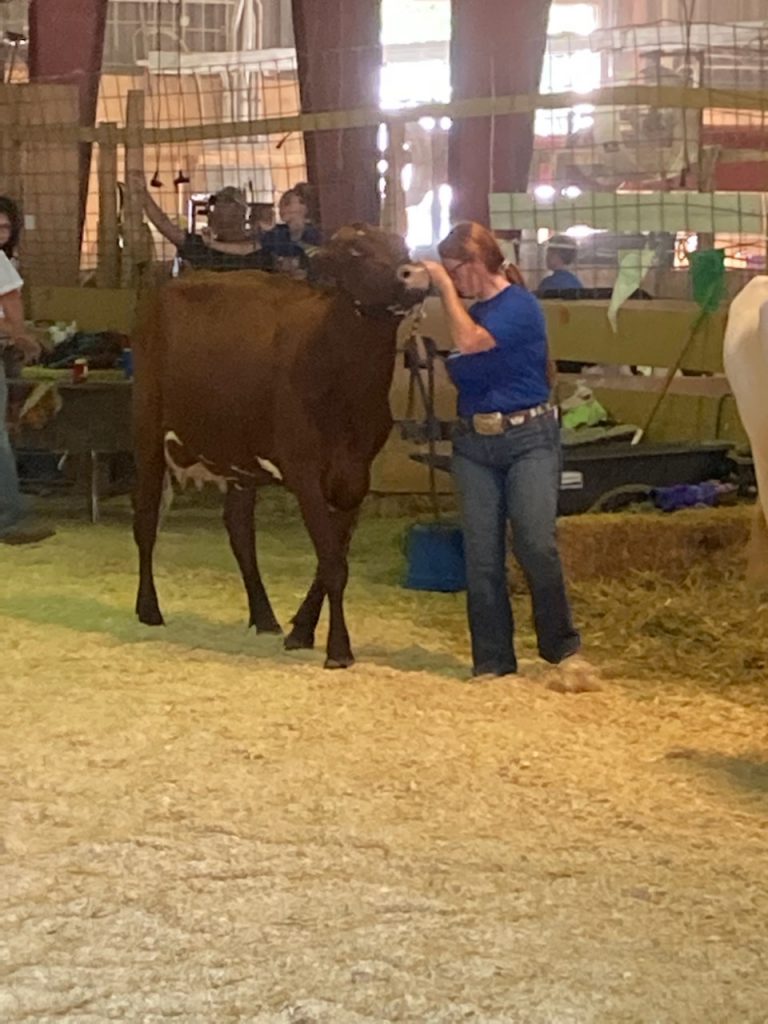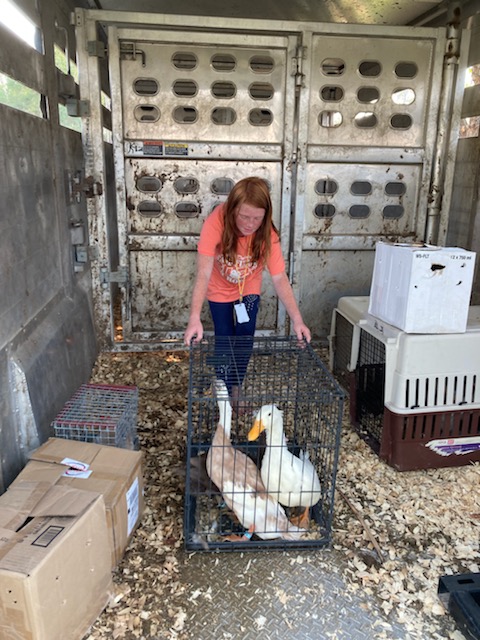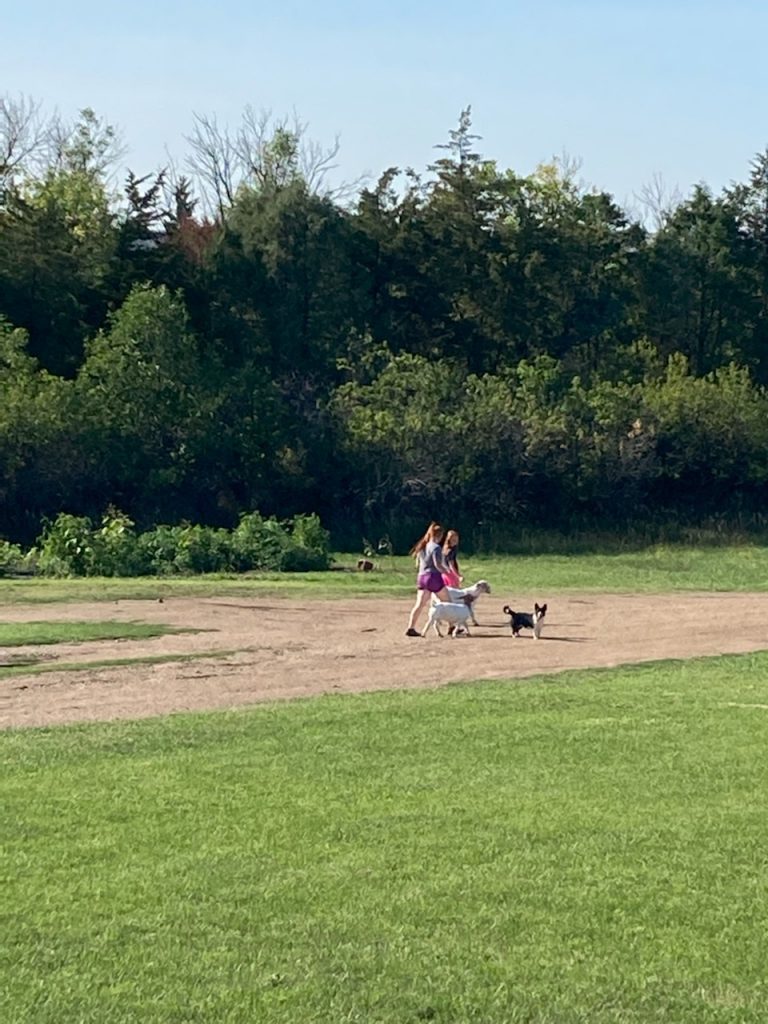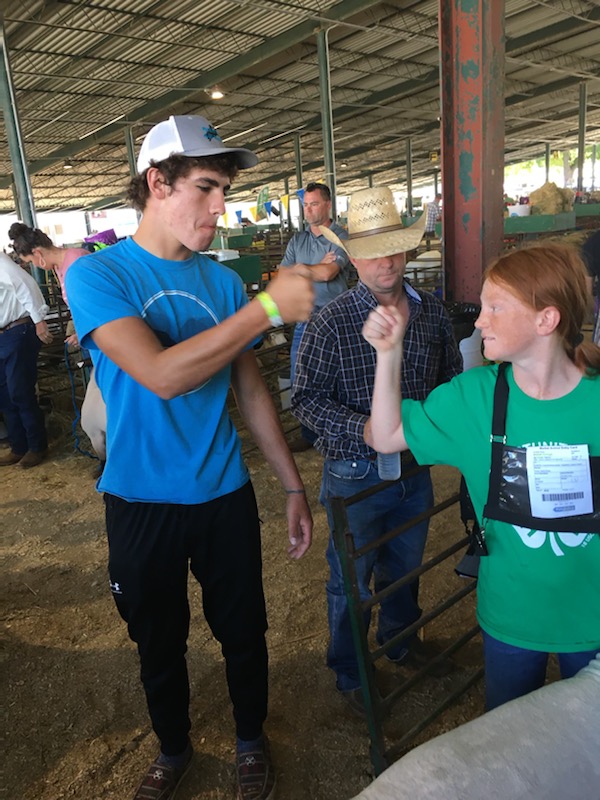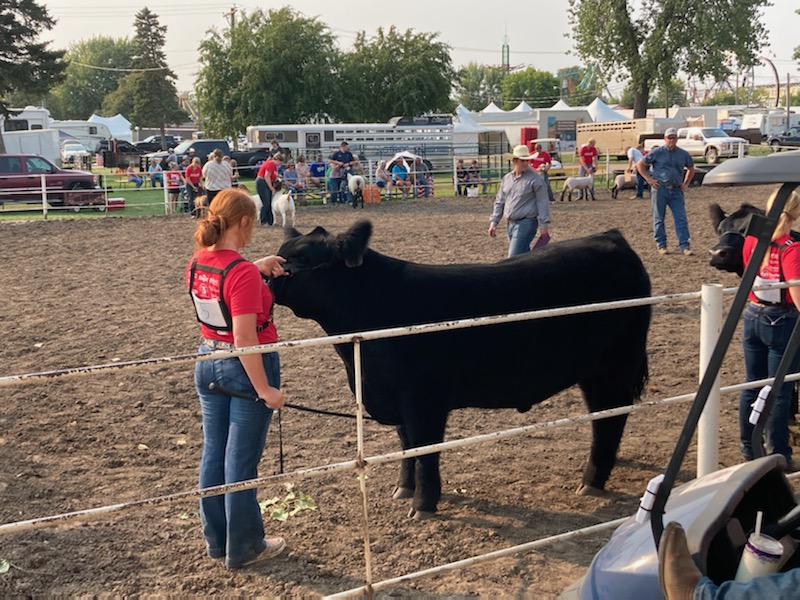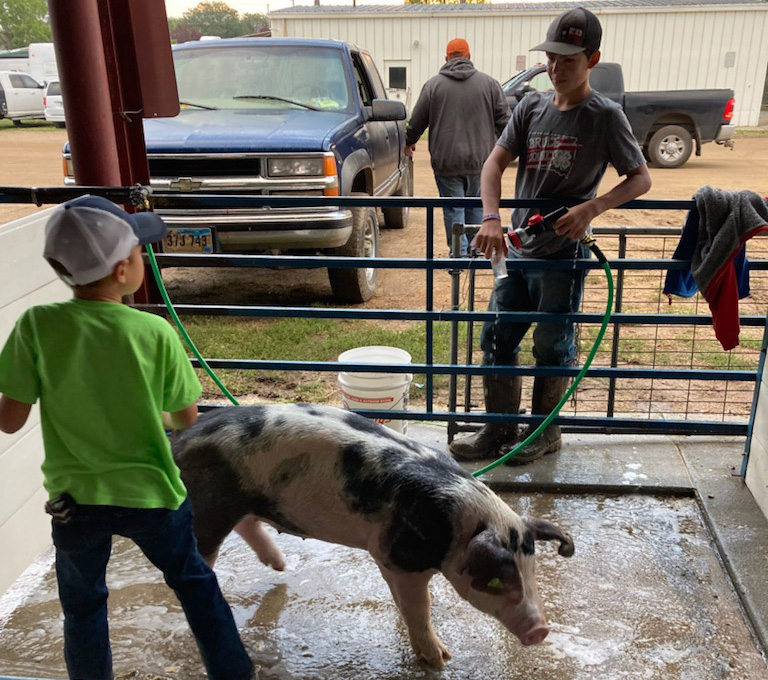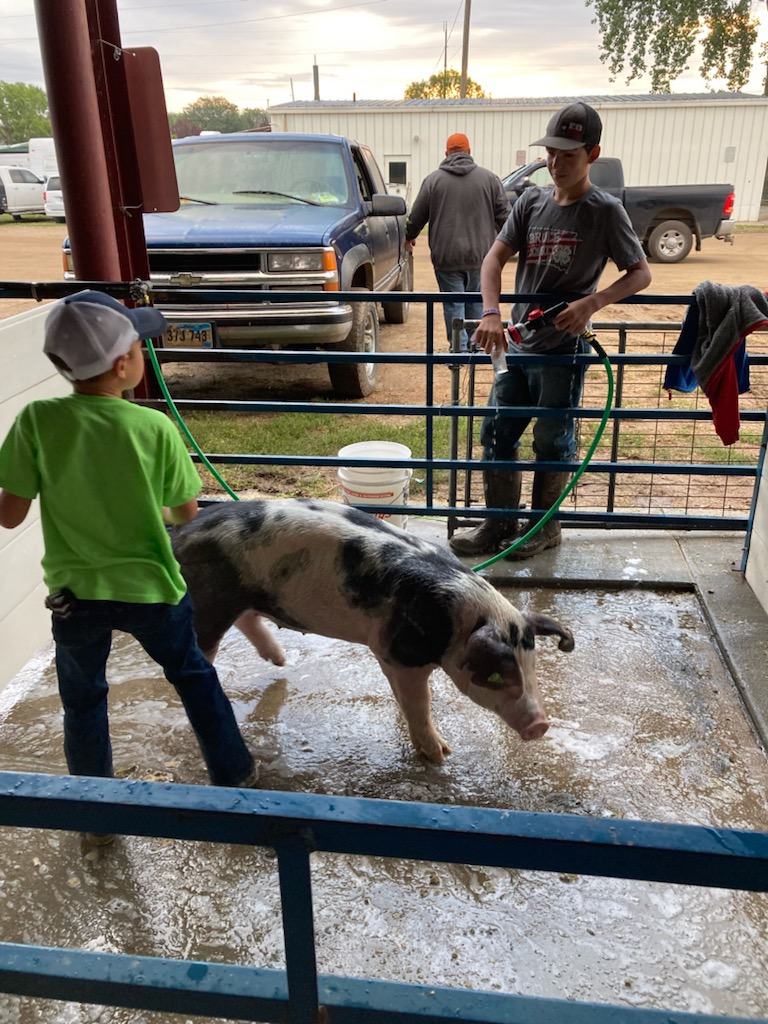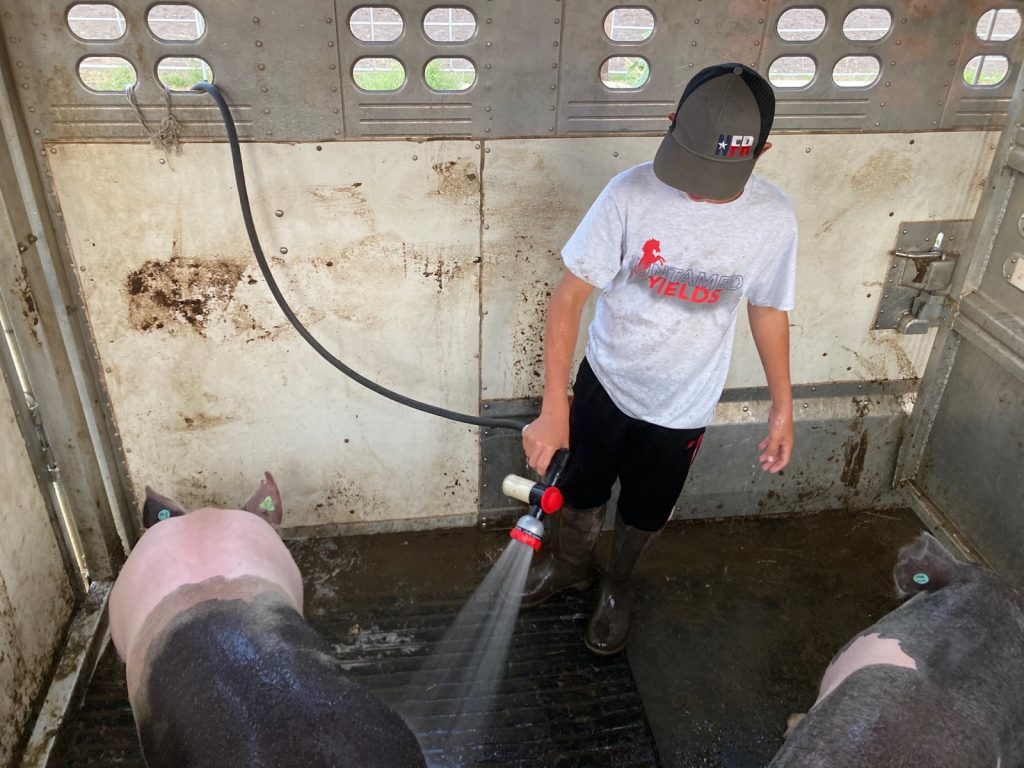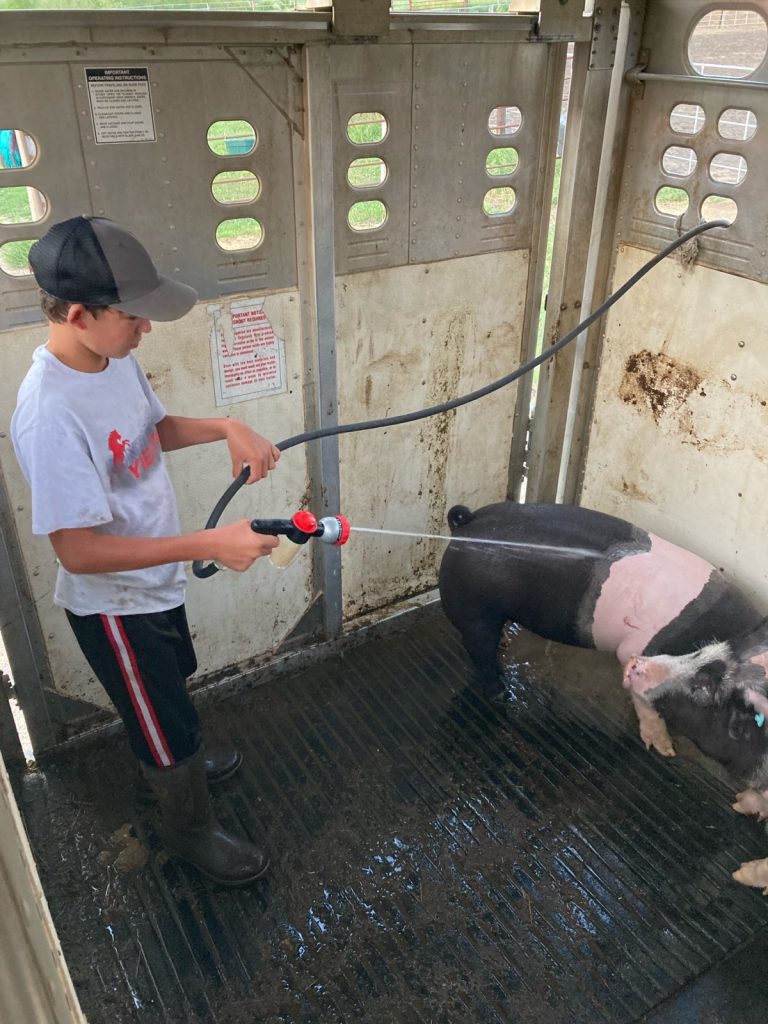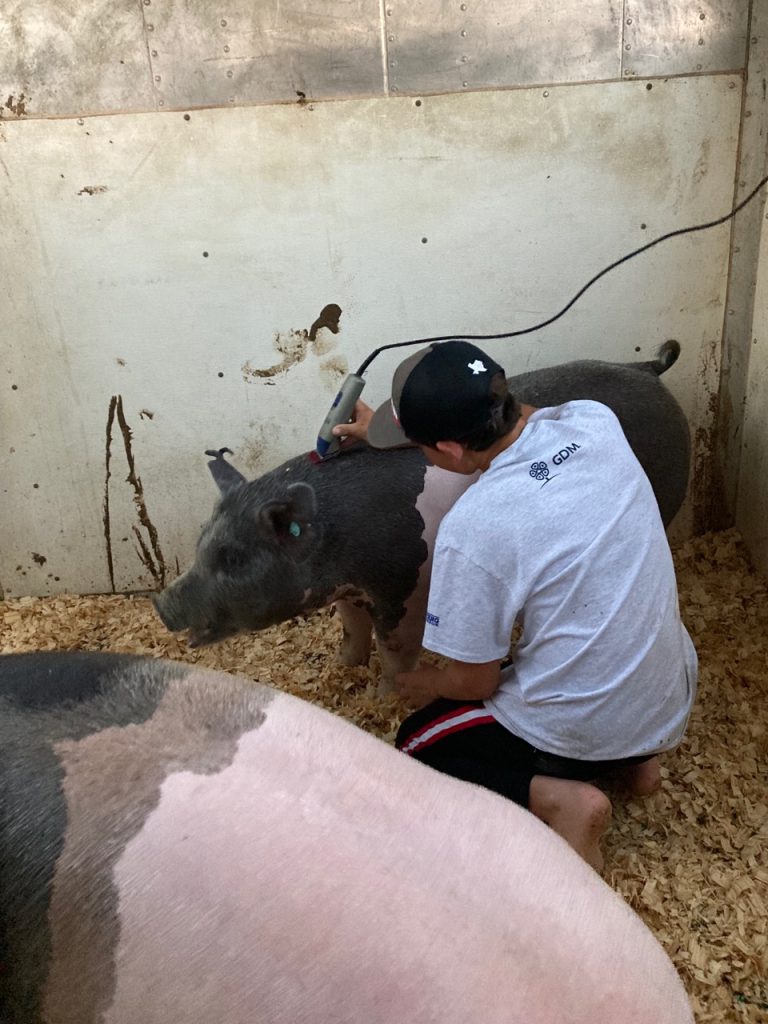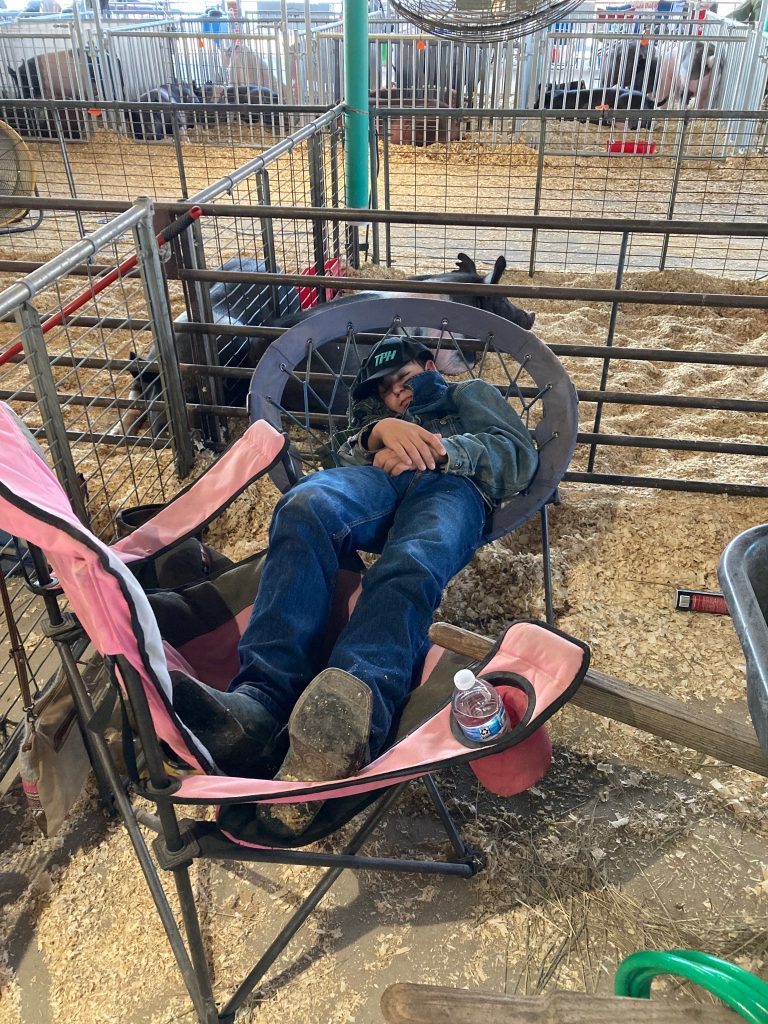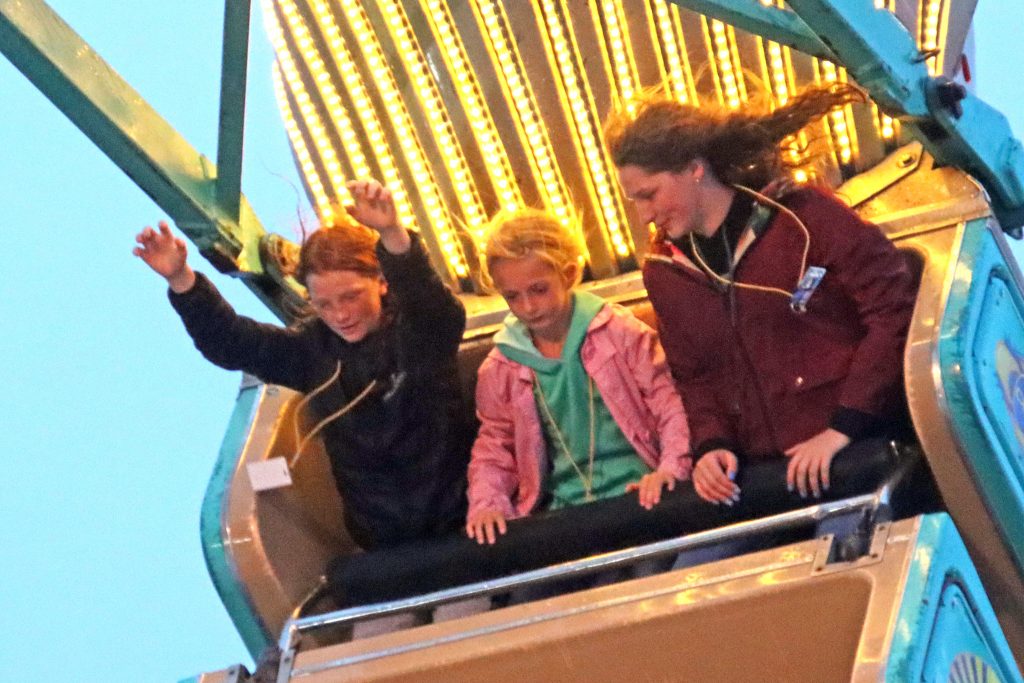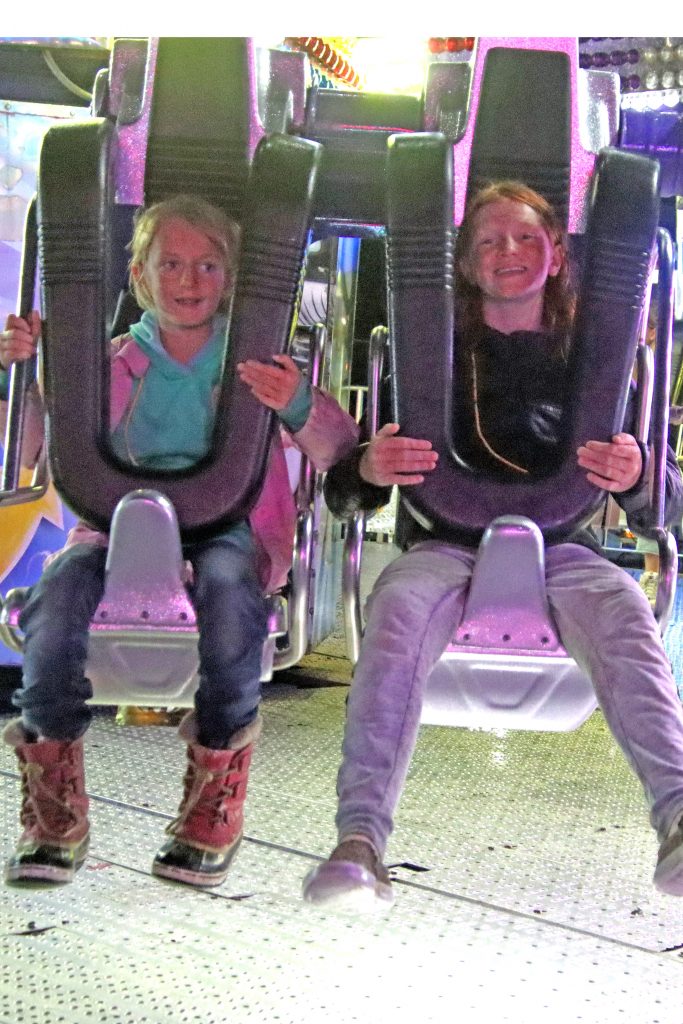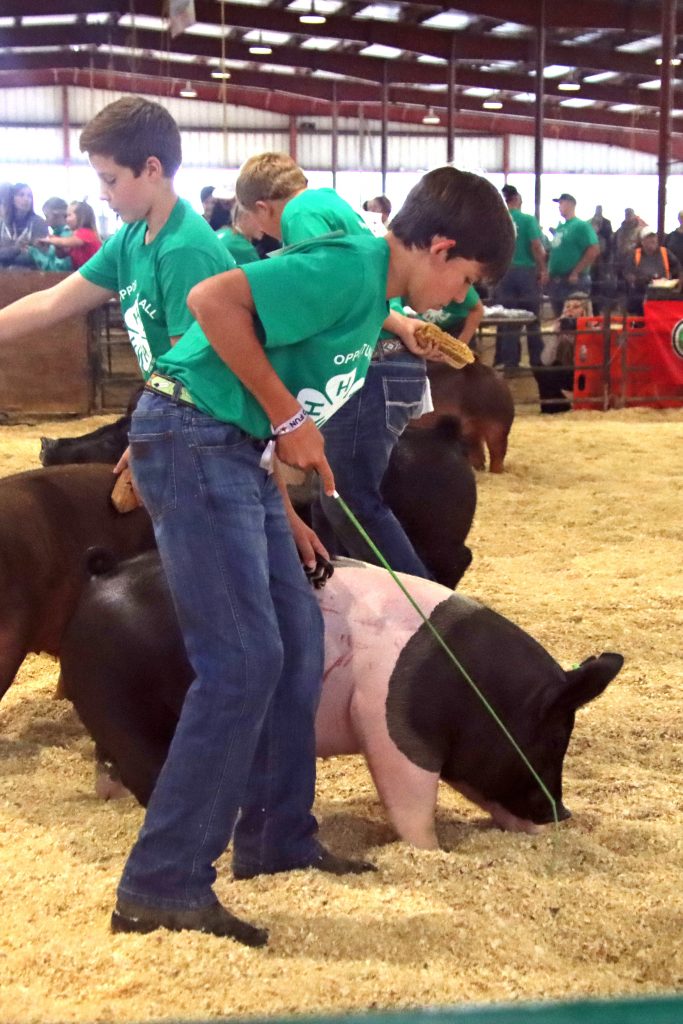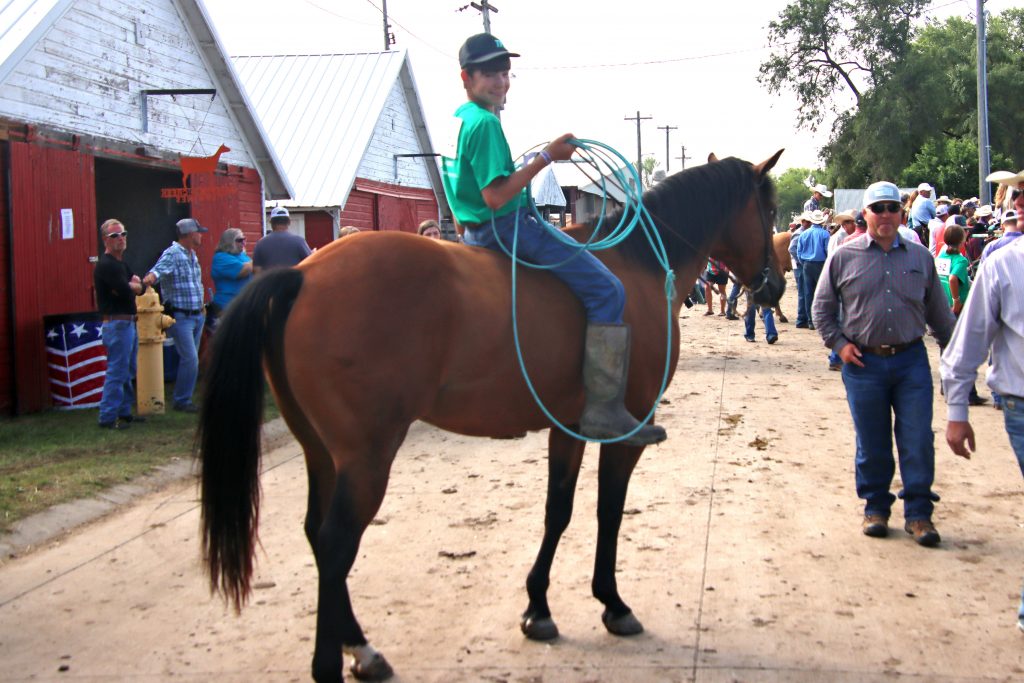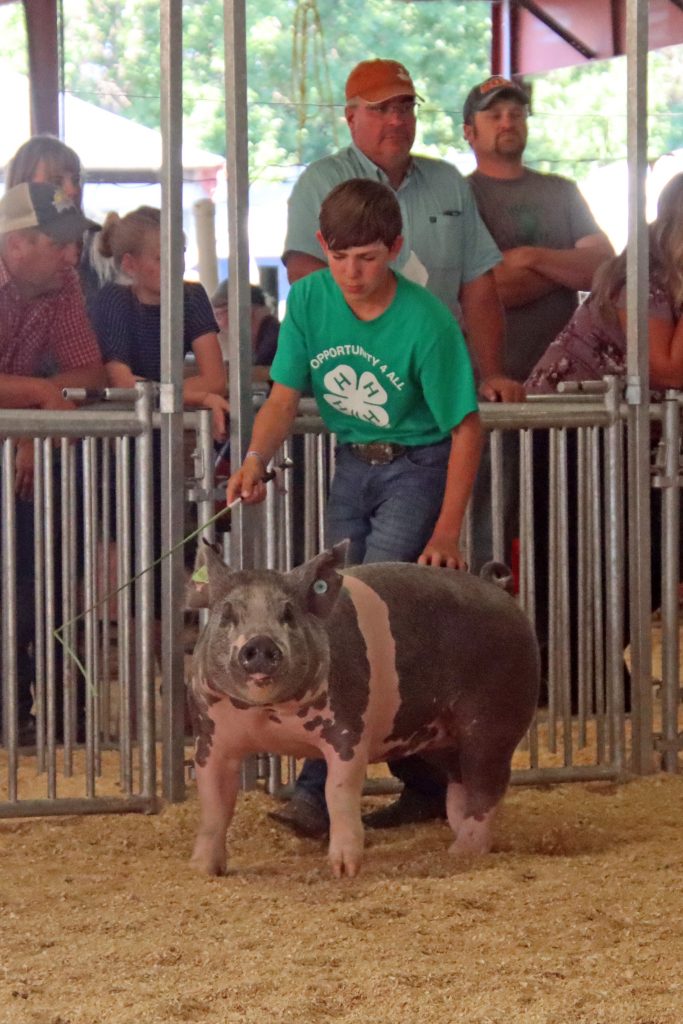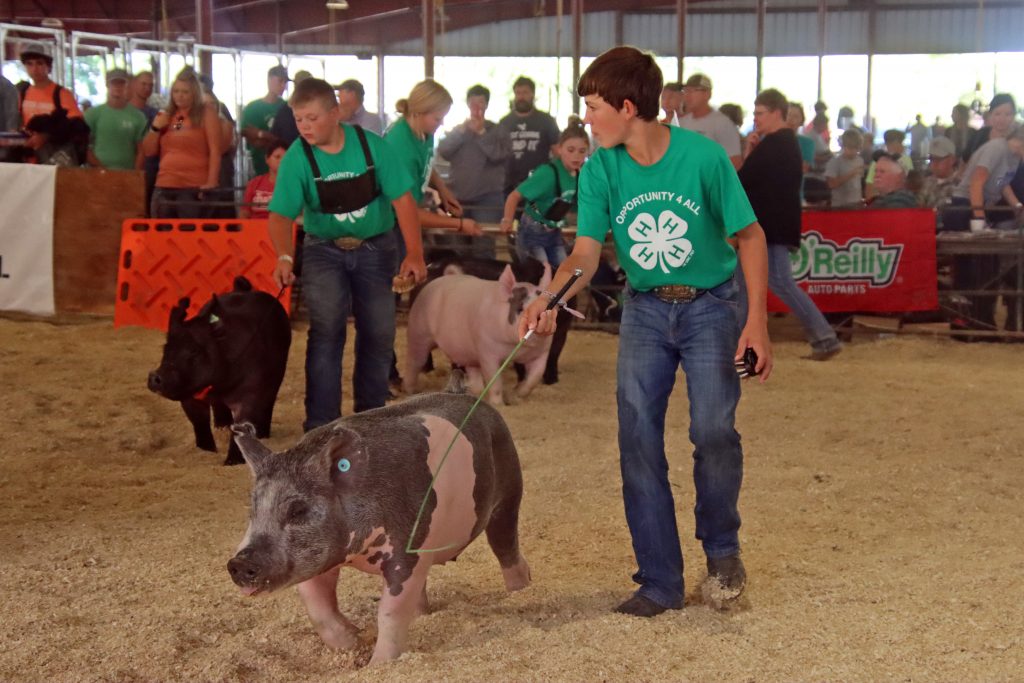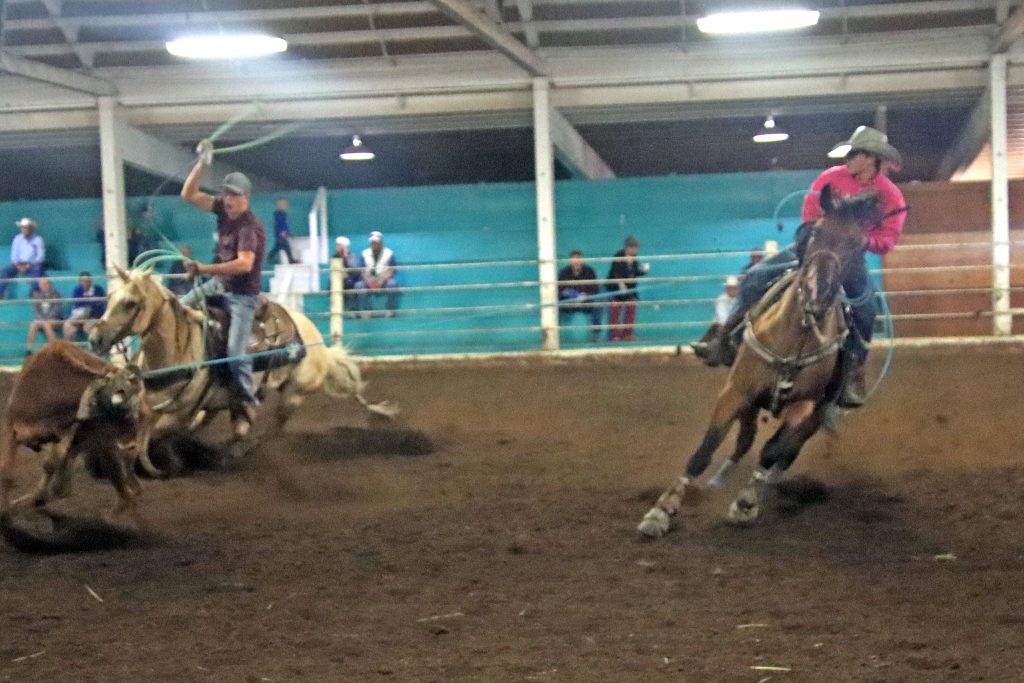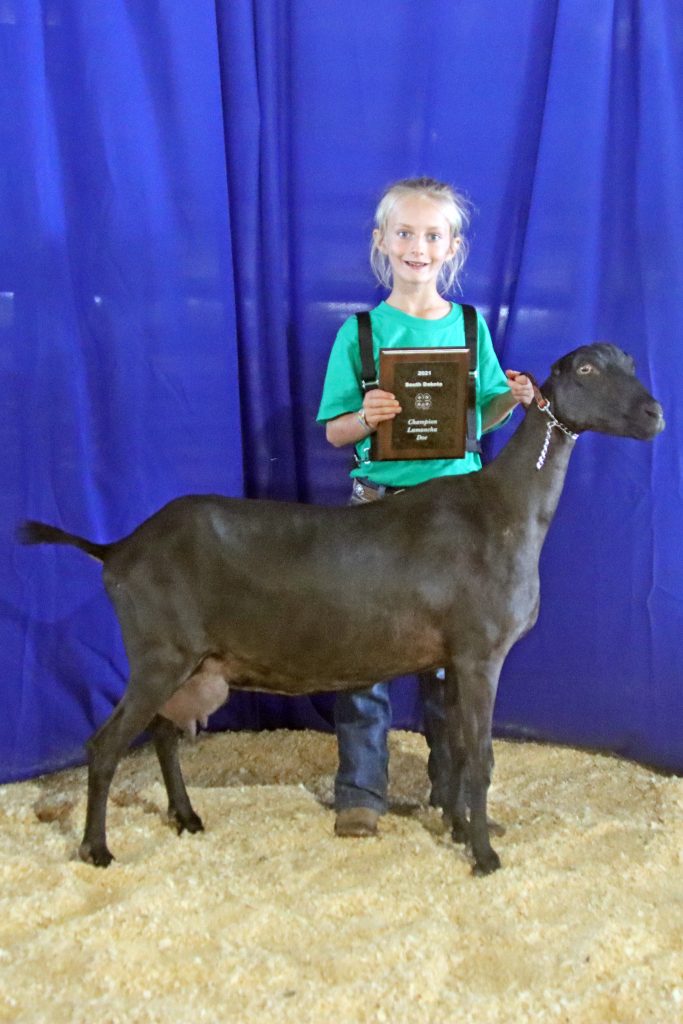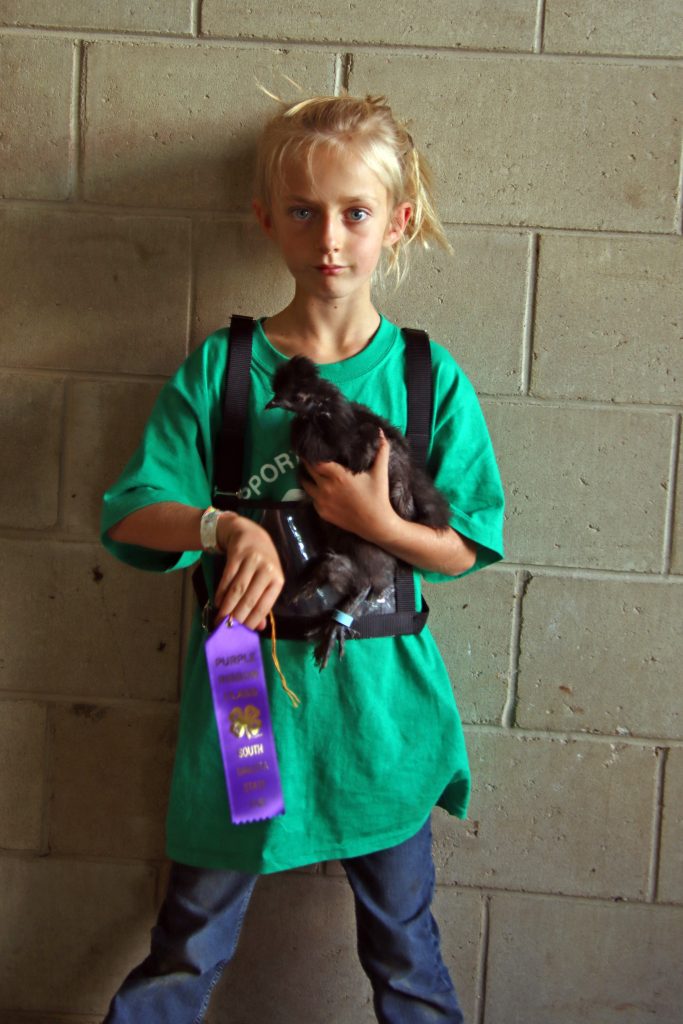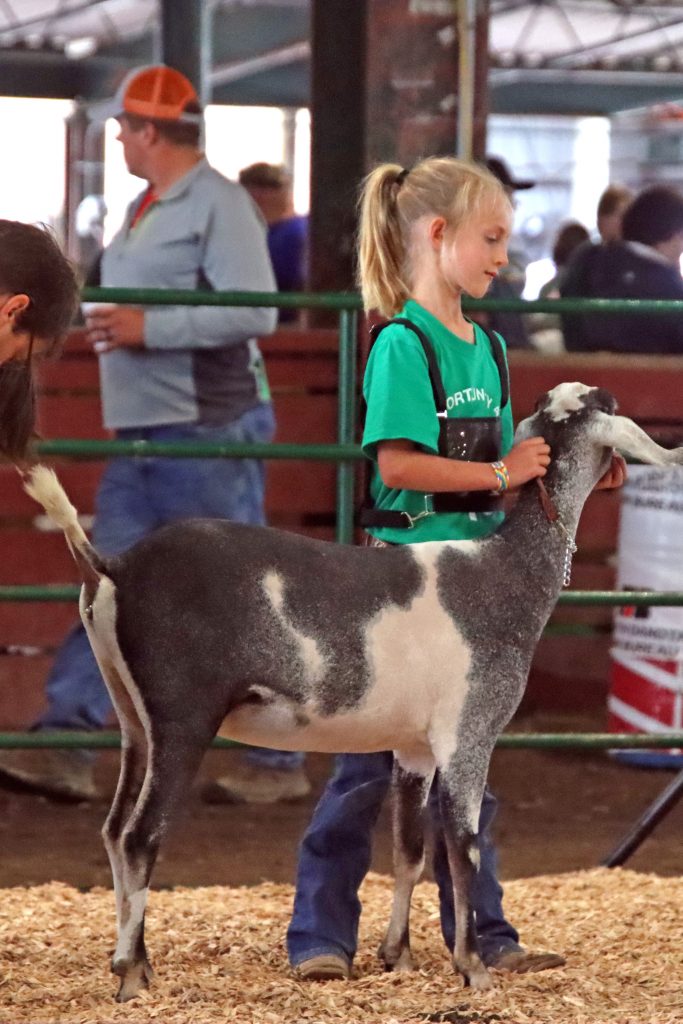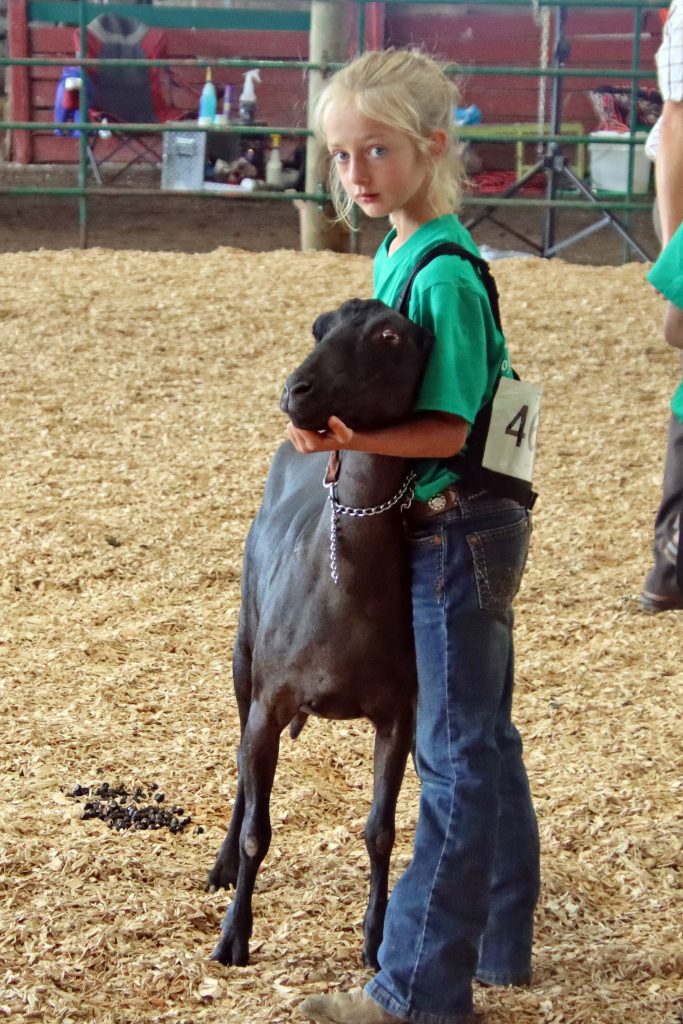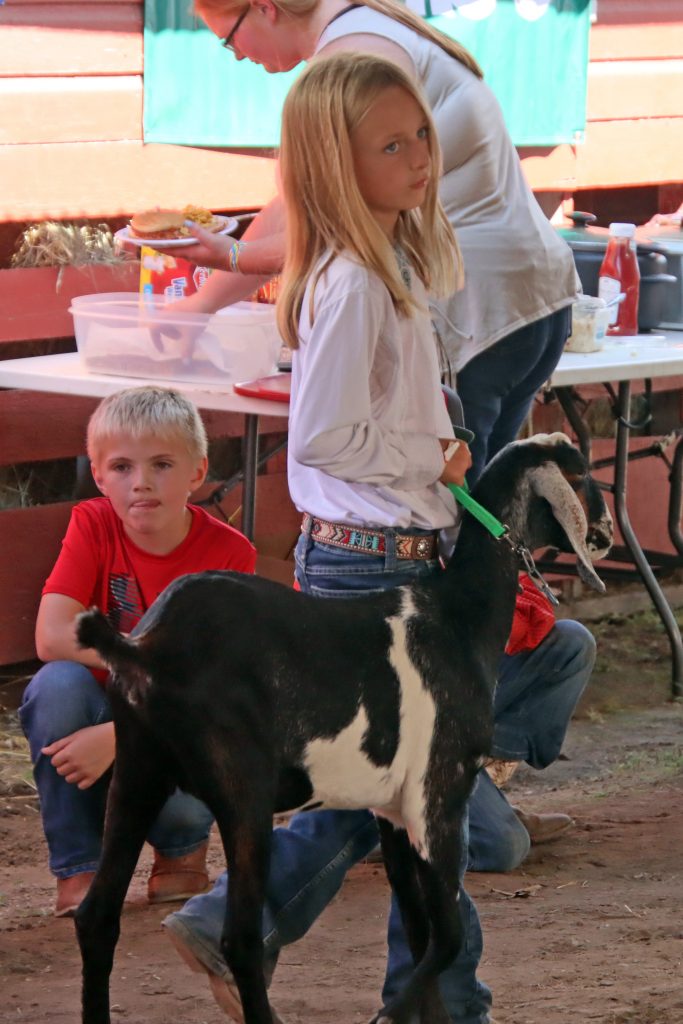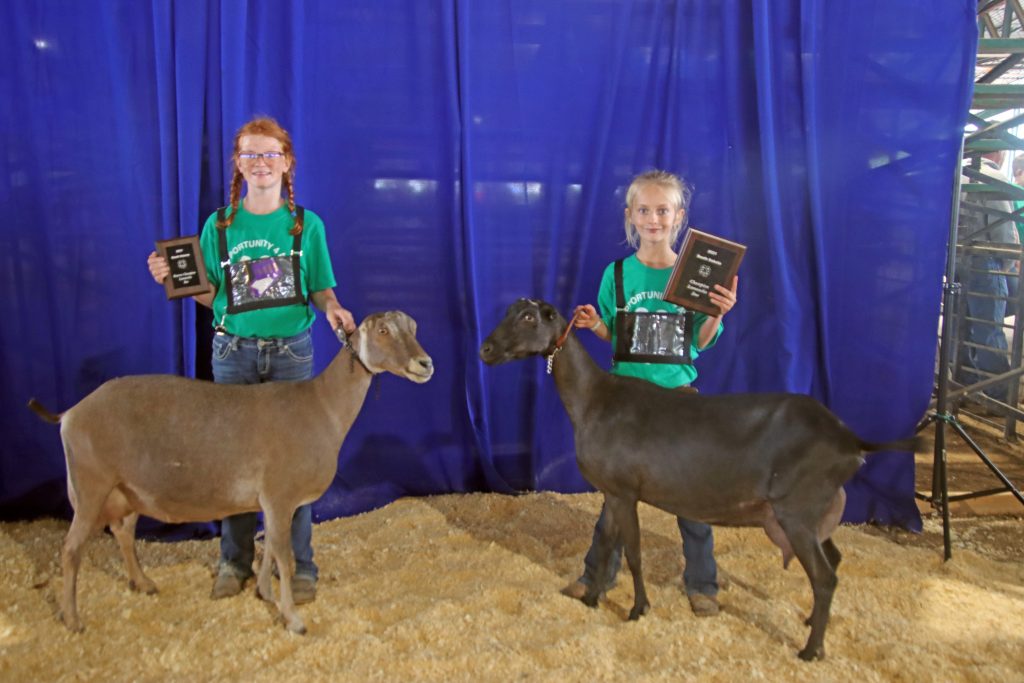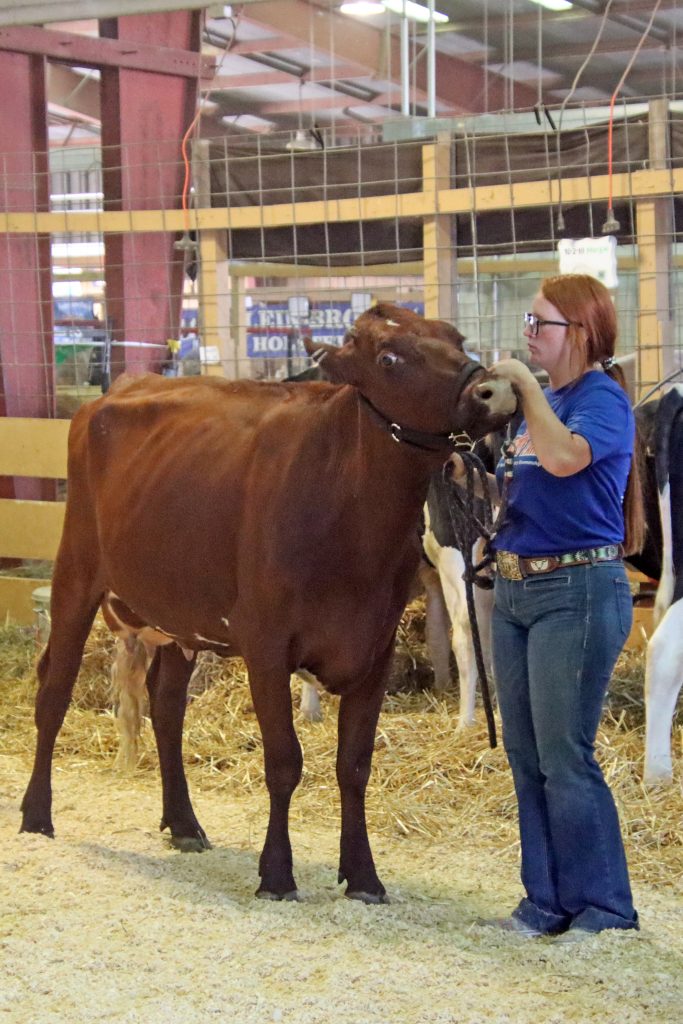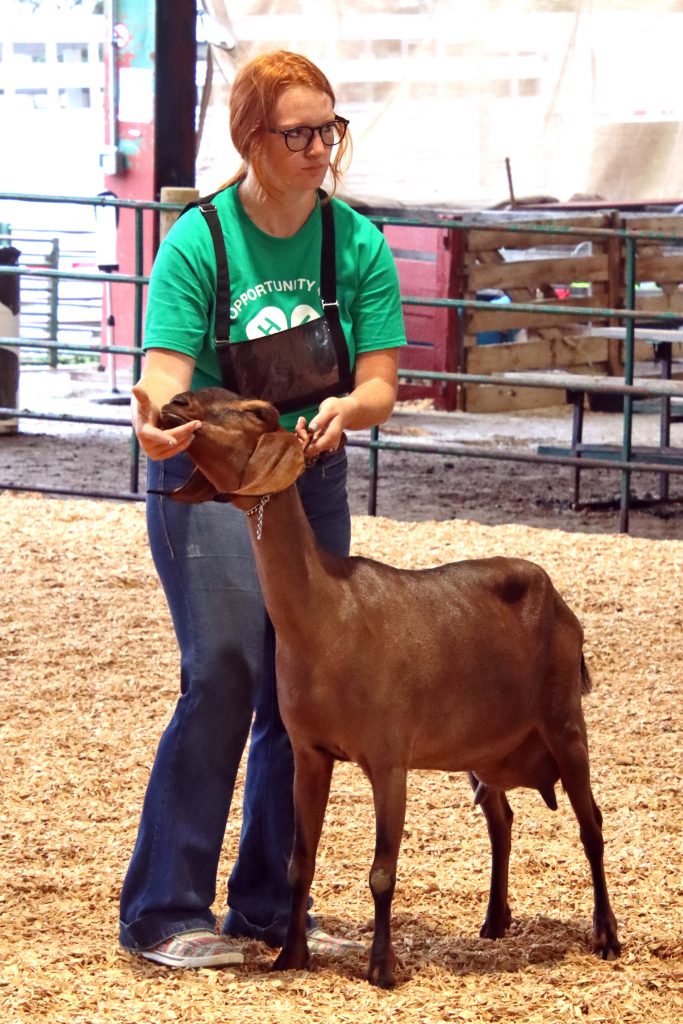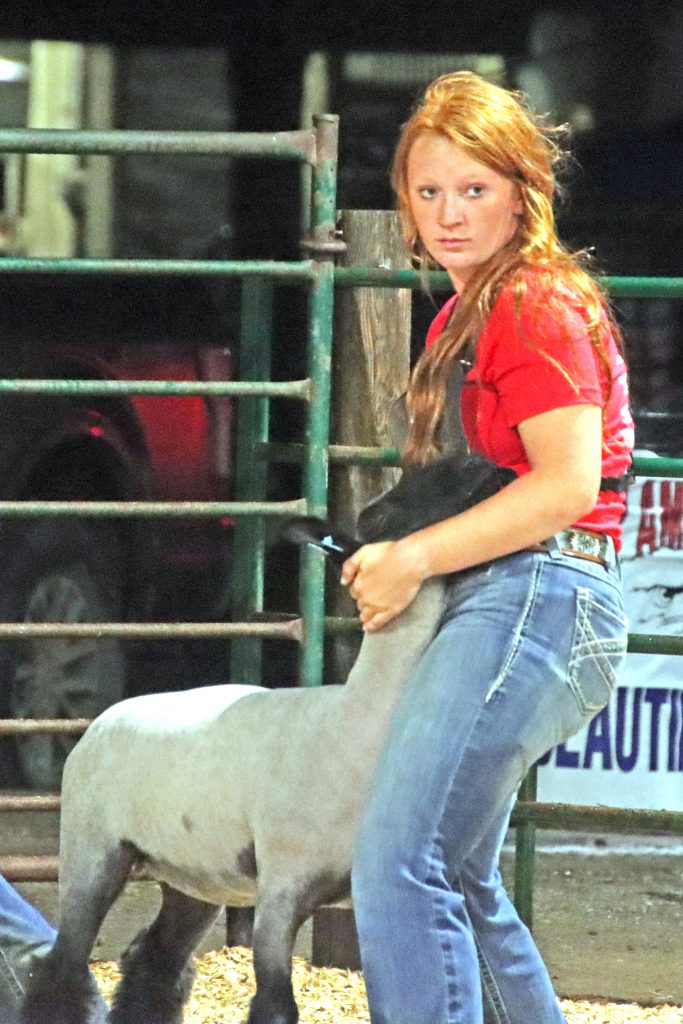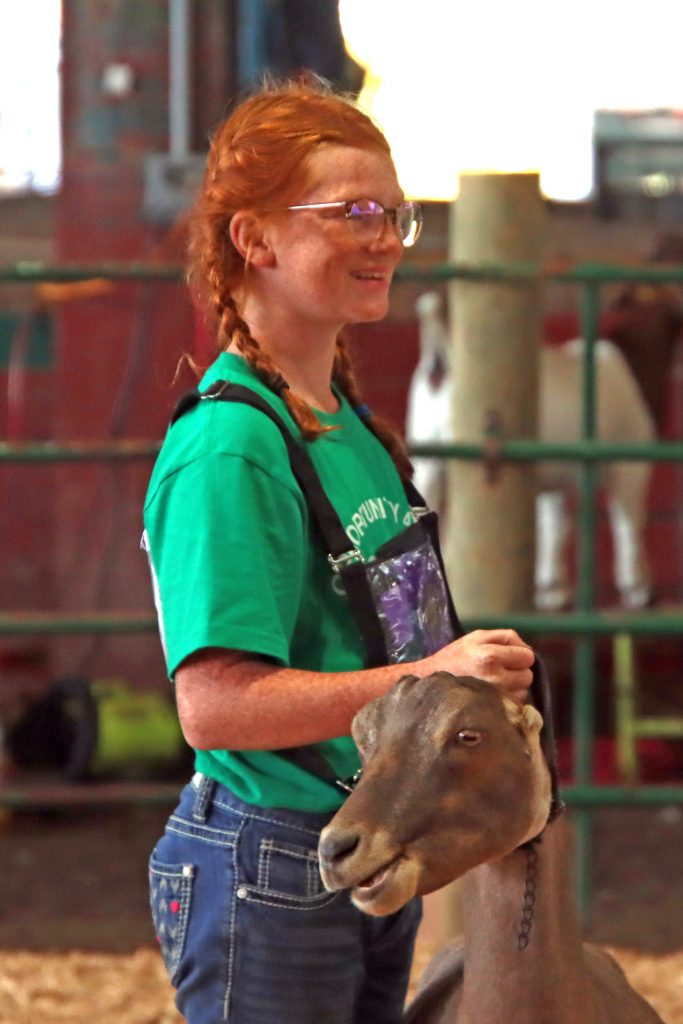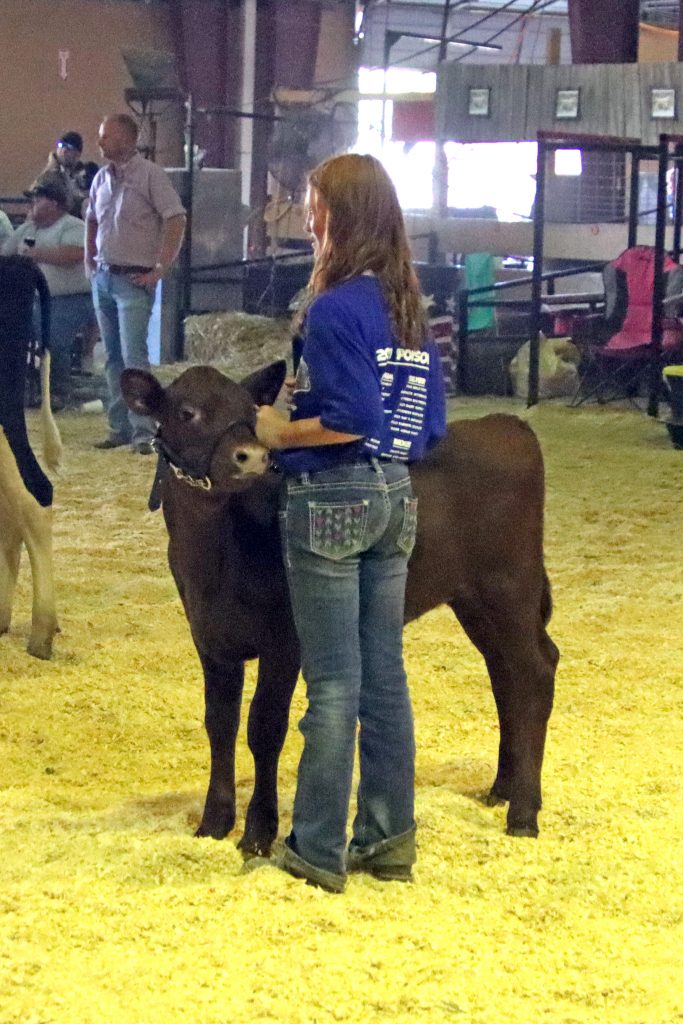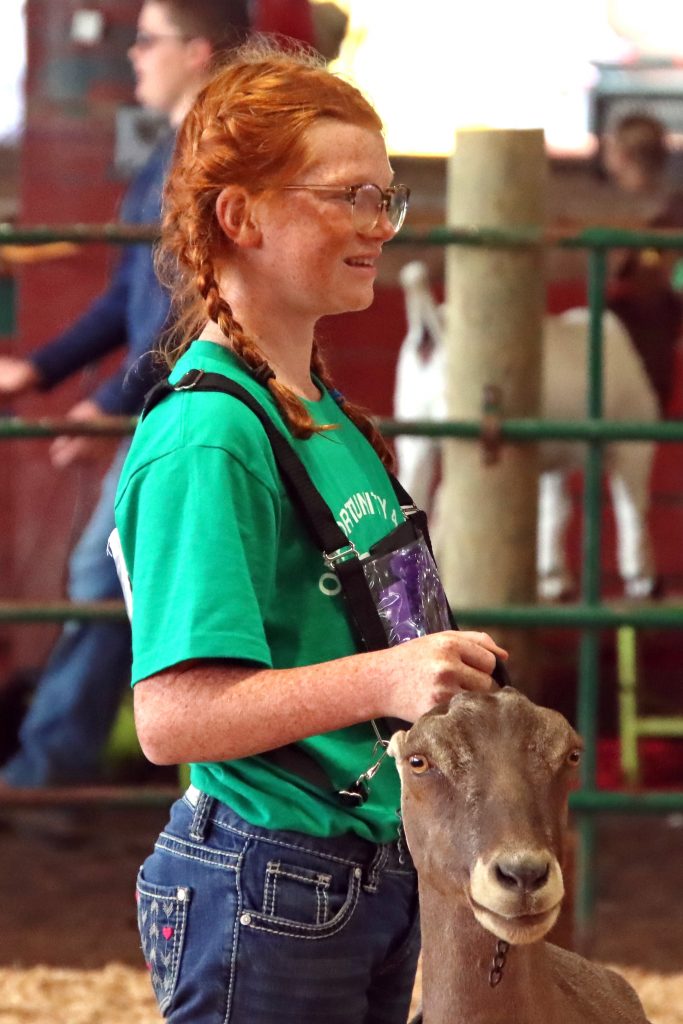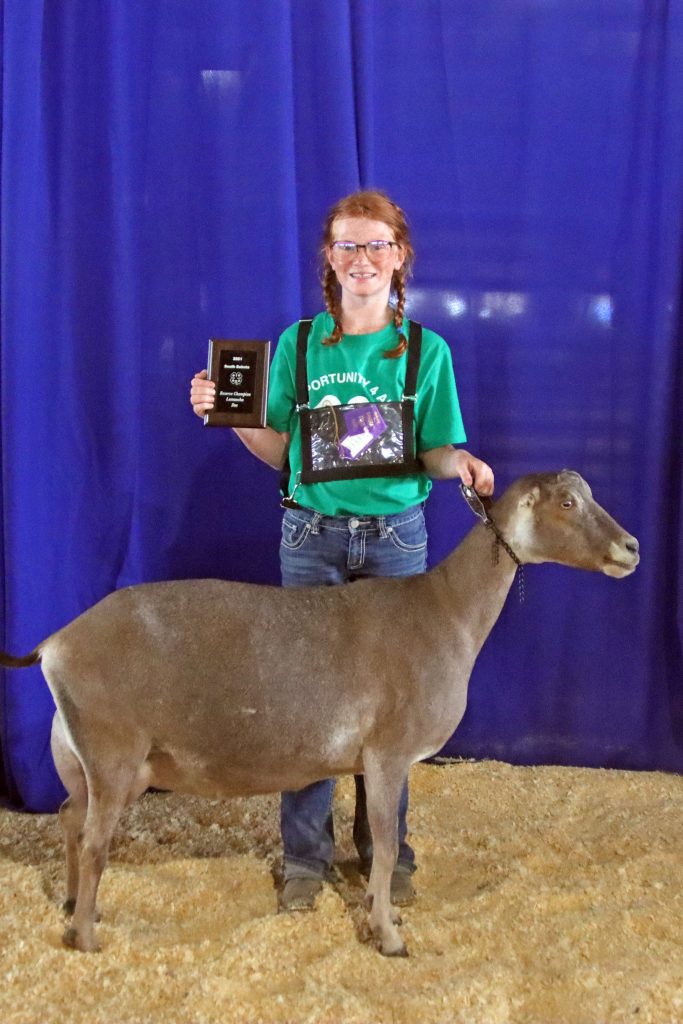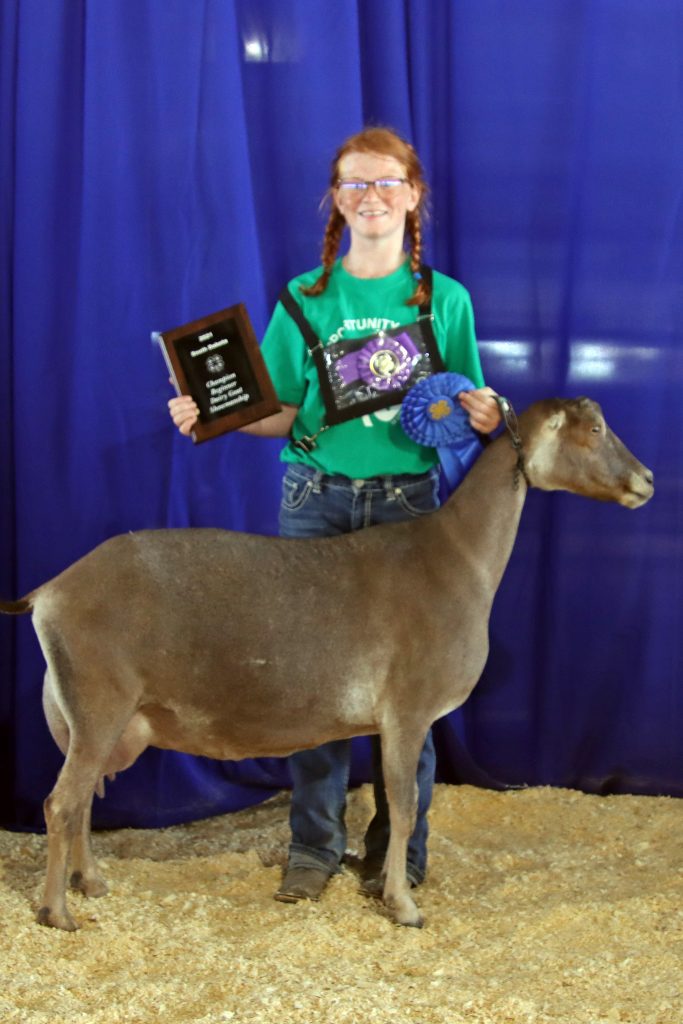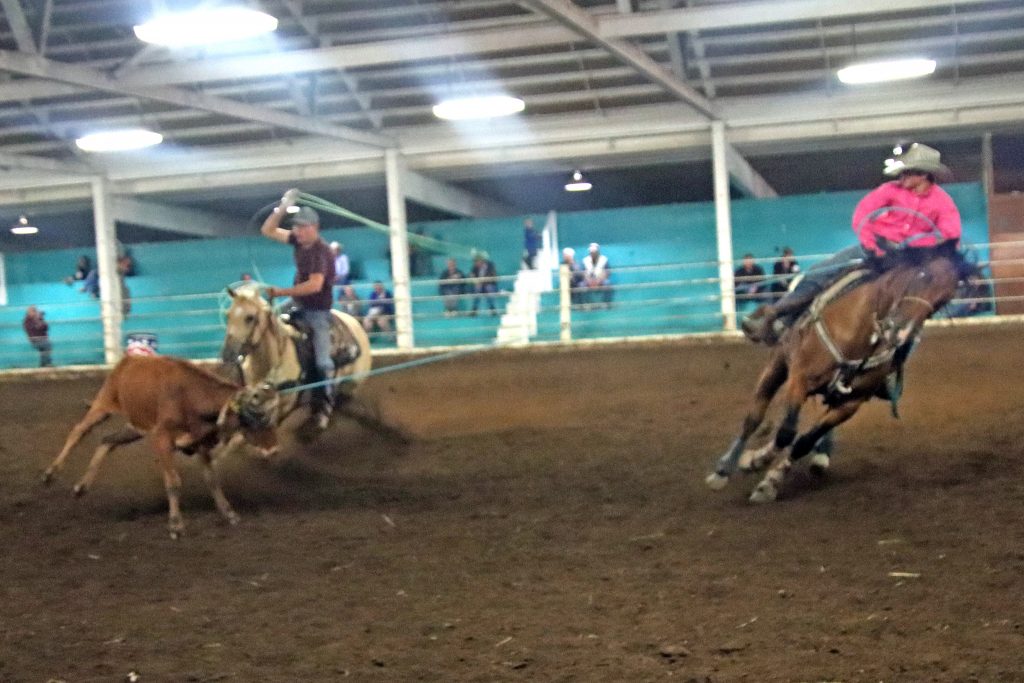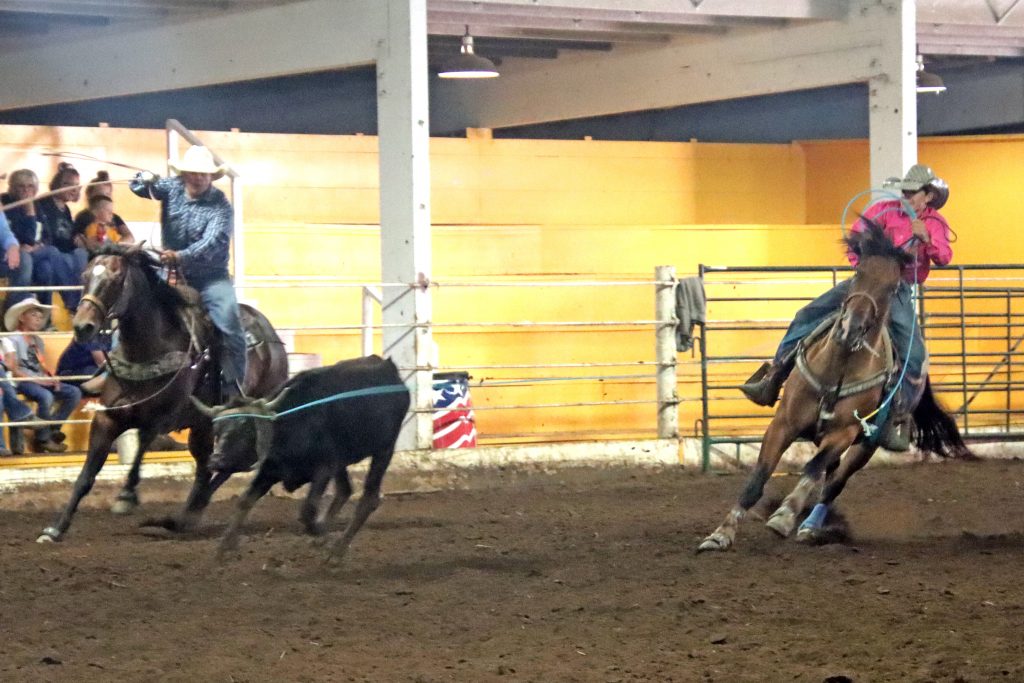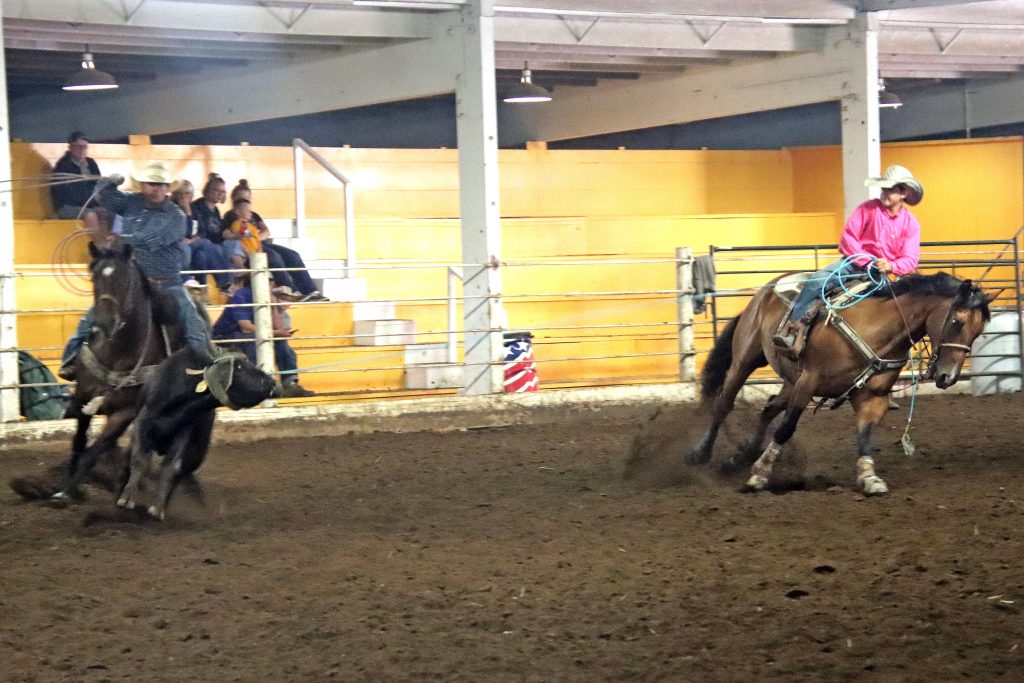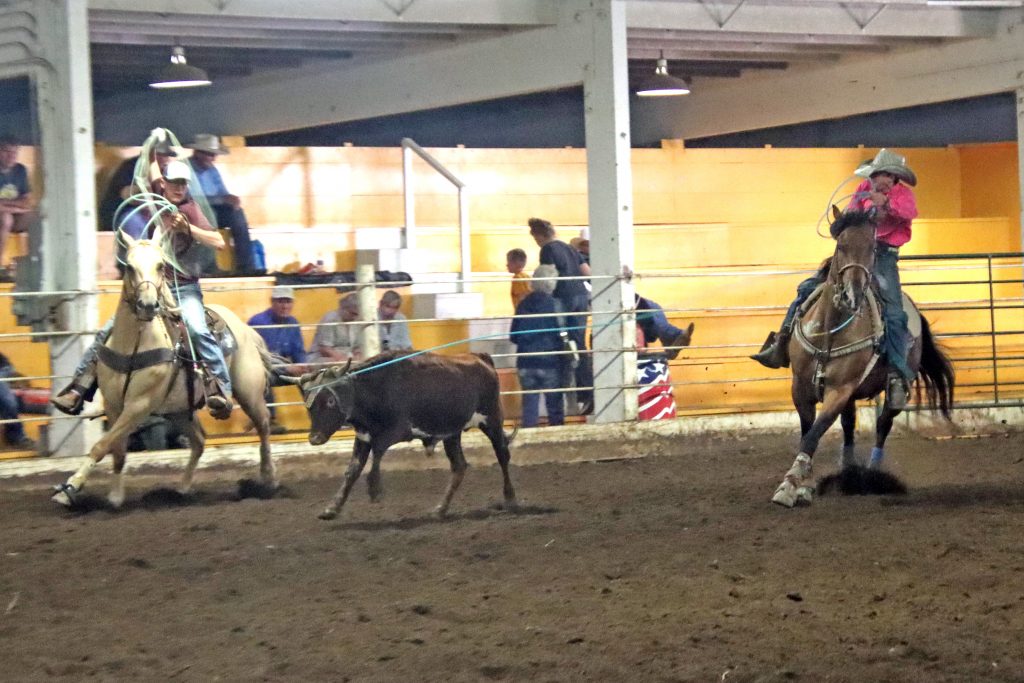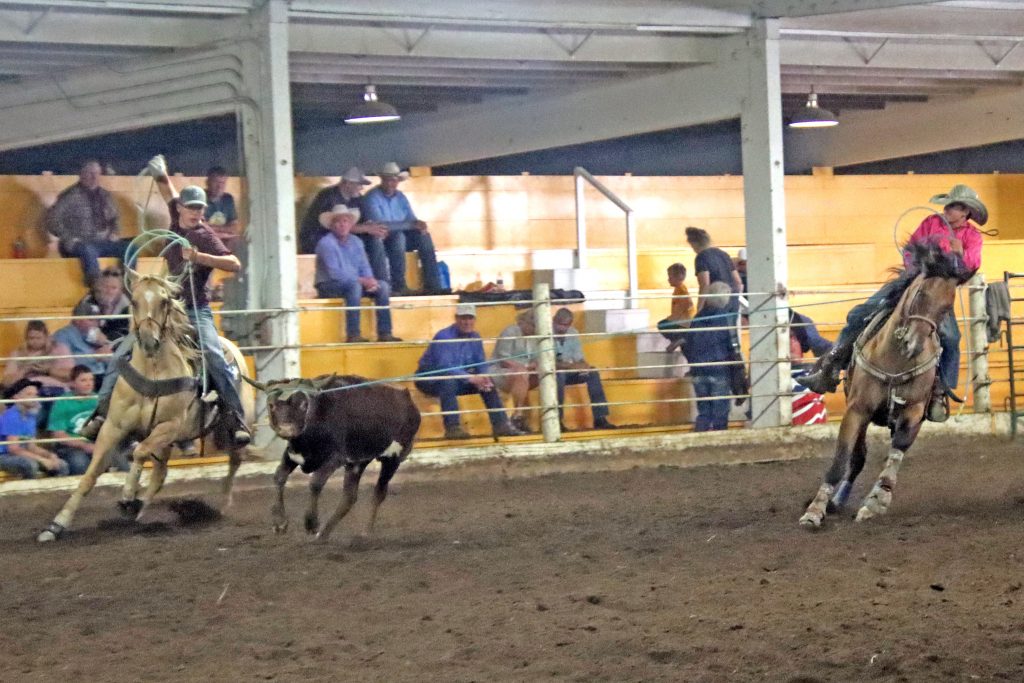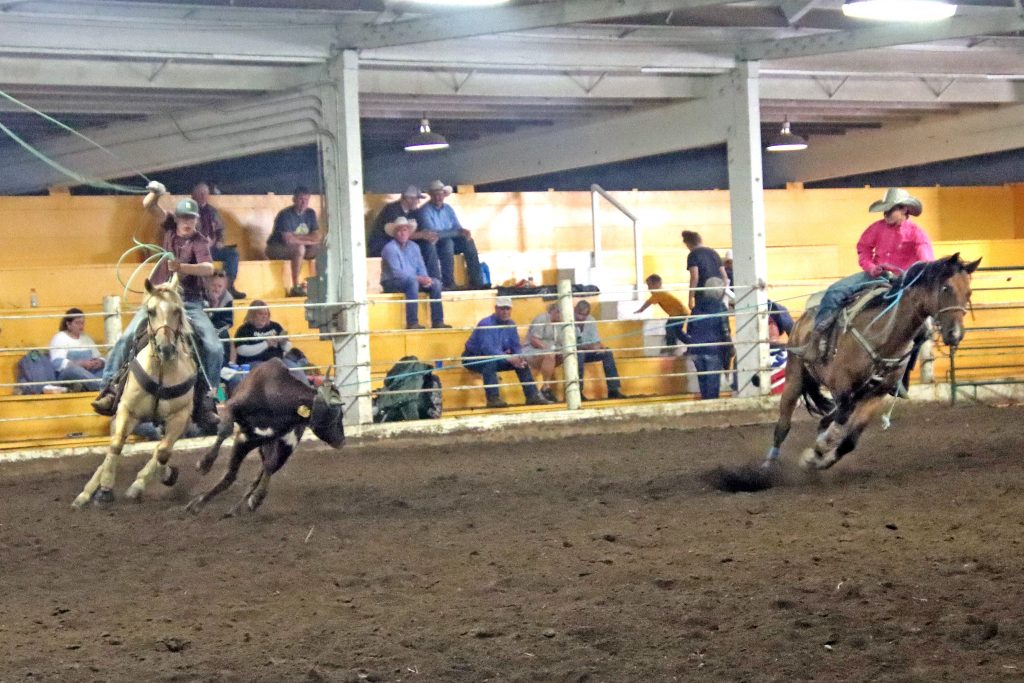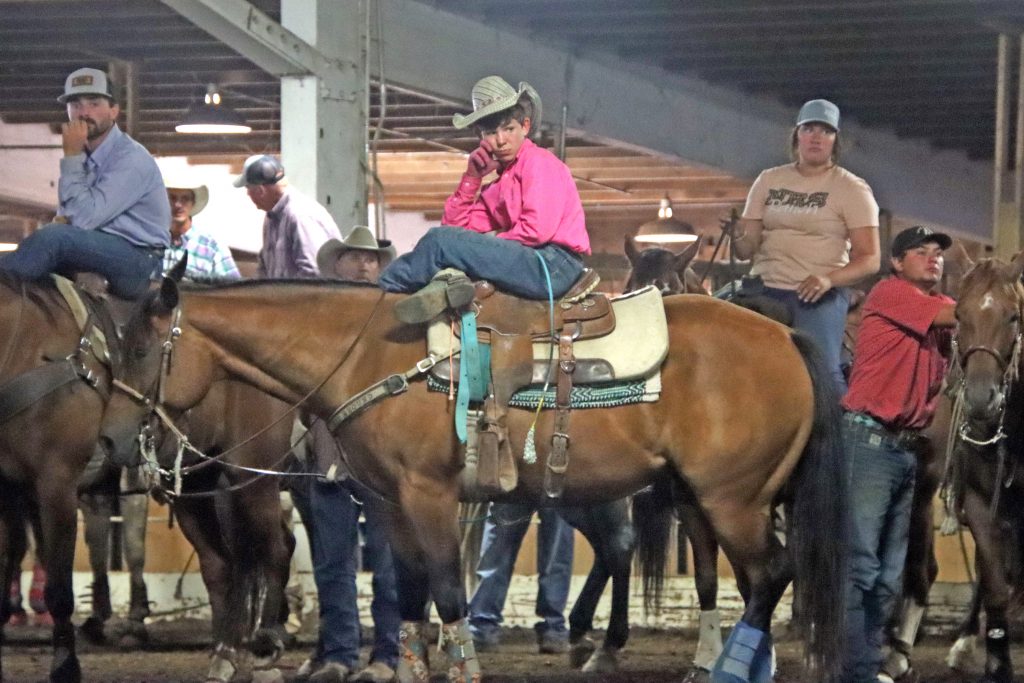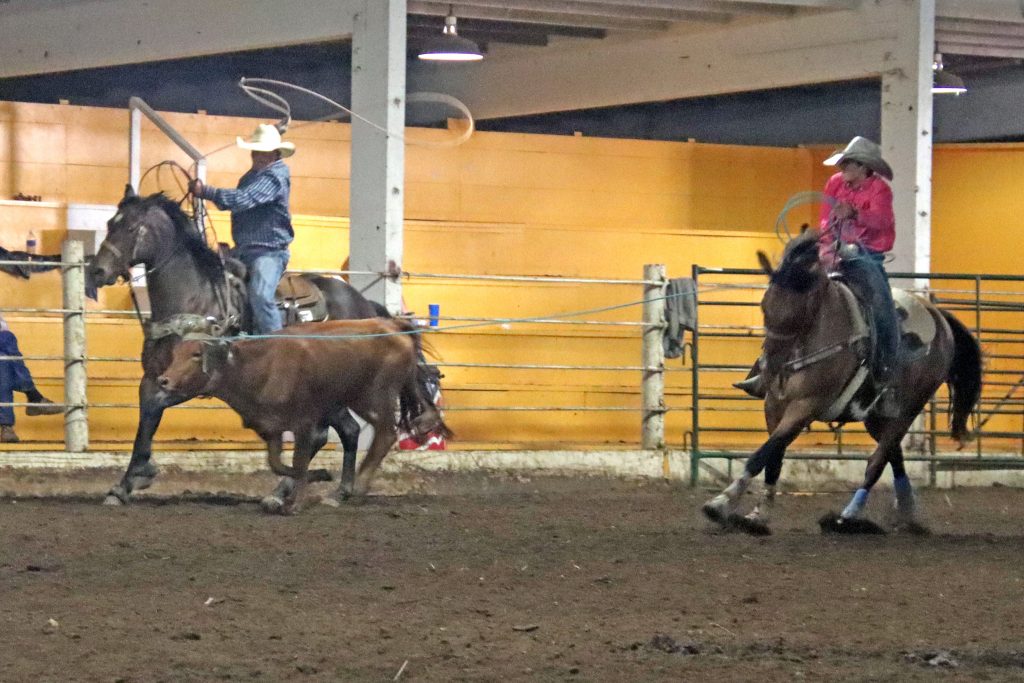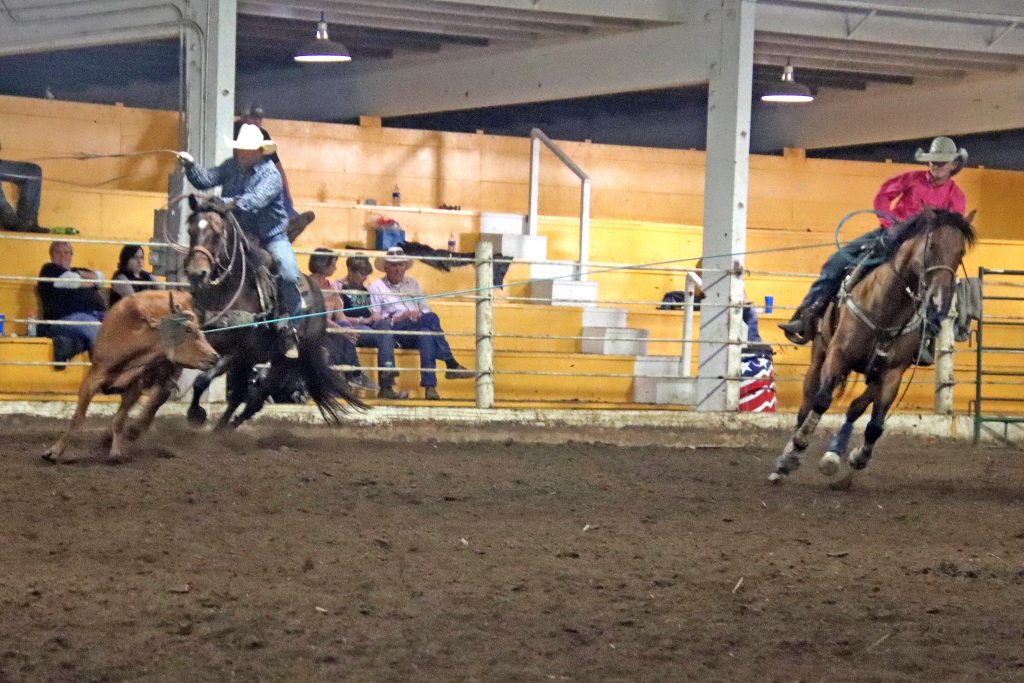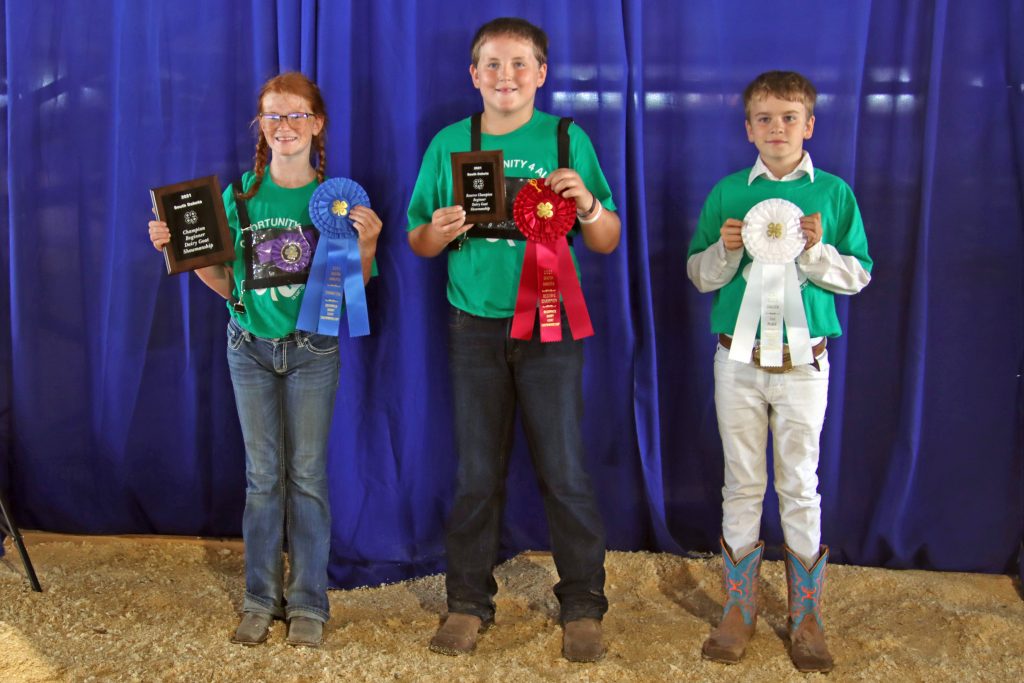Behind the Scenes of State Fair & Western Junior Showrings: 4-Hers Share What it Takes
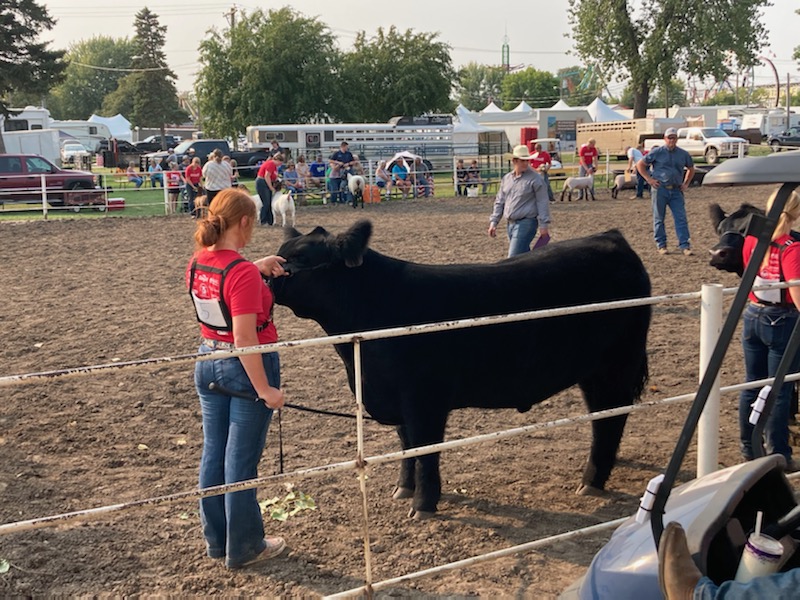
By Lura Roti
Sawdust carpeted showrings filled with well-dressed youth, attentive to judges as they show their clean, expertly groomed and calm livestock – this is what State Fair and Western Junior Livestock Show visitors see.
But what does it take to get there?
Lyman County 4-H members, Haleigh, Keeleigh and Oakleigh Elwood and their cousins, Rope and Swade Reis, provide us with a behind the scenes look at the time, effort and fun that goes into getting their show animals ready for two of the state’s largest shows – the South Dakota State Fair and Western Junior Livestock Show.
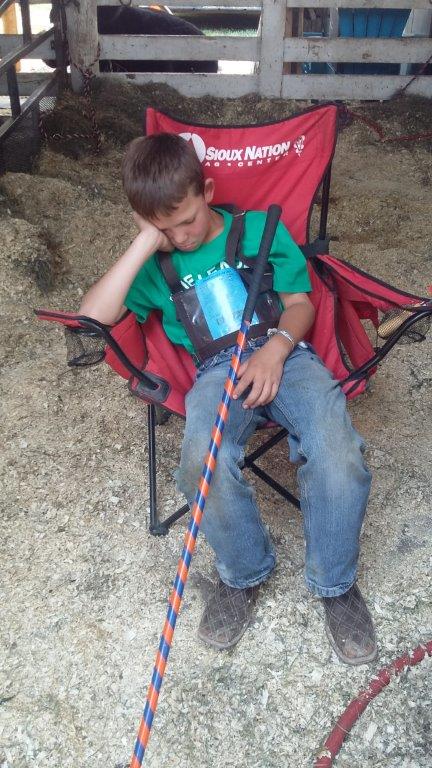
Time and Plenty of It
Grandpa Dave and Grandma Brenda gave each of the cousins a heifer calf when they turned, 5. This unique college savings plan means the cousins grew up helping on the family’s Reliance ranch. They all have a clear understanding that if you’re going to keep livestock, you need to make time to care for them. So, morning and evening chores are nothing new for these kids. But their show animals require more than food, water and good fencing, explains Keeleigh. “I give them about a month to settle in and then, in May, I start walking them each about 30 minutes a day and then my sisters and I set aside two to three days a week that we practice showmanship for an hour or two.” All told, the 16-year-old spends about three to four hours a day working with her show animals.
Walking/running the pigs, goats and sheep does more than tame them and train them to show. “With the goats and sheep, we walk them a short distance and run them back to build muscle,” Keeleigh says. “For the pigs, it also helps build endurance. I have been at a State Fair show, and 10 minutes into the show a pig just wanted to lay down.”
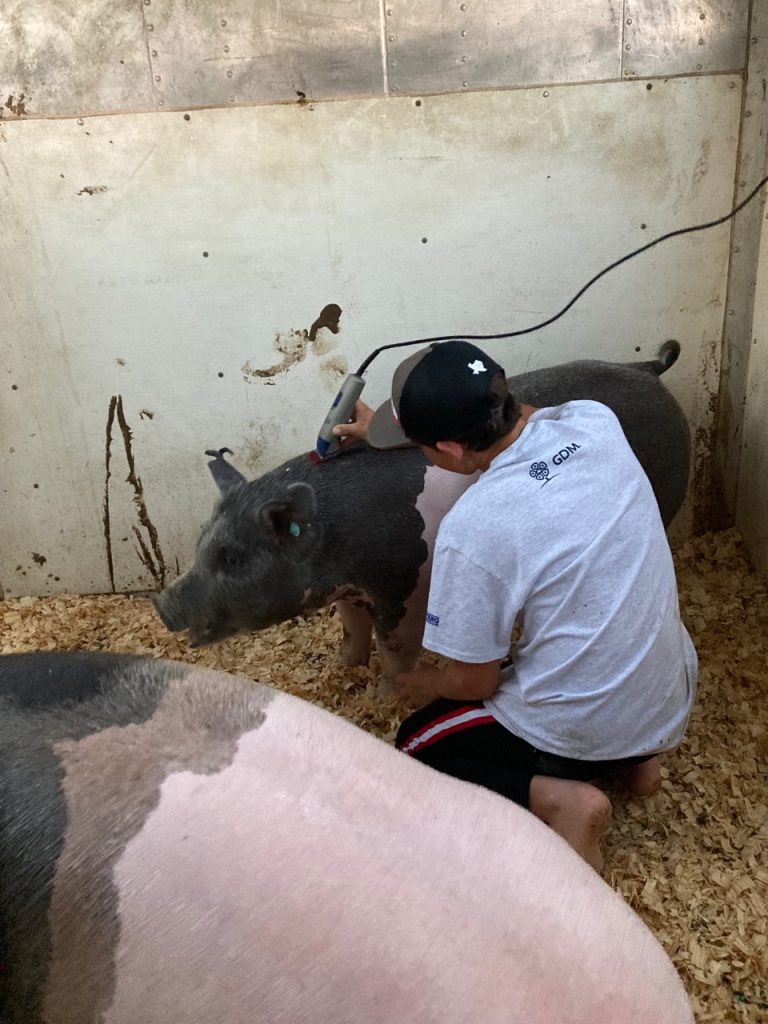
To show off those muscles and other breed features, they set aside time for grooming or fitting their animals – even their show pigs, explains Keeleigh’s 13-year-old cousin, Rope. “First I wash them off and then I clip the hair off their bodies to get them as shiny as possible.”
Their beef cattle need to be rinsed off twice weekly; and meat goats and sheep need to be trimmed before the show.
And then there’s monitoring their feed intake. “We usually get a feed mix of some kind for the pigs and we’ll check weight. Some of them get an automatic feeder, so they get as much as they want. And if it looks like they need to gain, then we will hand feed them,” Rope says.
Making time for their show animals as well as rodeo and school sports can be a challenge, adds his brother, Swade, 16. “It gets really busy. Breaking them to show and rinsing them off every day. So, I really have to manage my time after school. I make a list in my head and go thing by thing until everything is done. Sometimes I don’t go to bed until 10 or midnight.”
Swade and Rope’s mom, Heidi says his teachers have commented on Swade’s ability to manage his time. “I had a teacher tell me that they could tell Swade had responsibilities outside of school because he always finishes his work on time.”
Heidi and her husband, Shawn, both grew up involved in 4-H. In fact, Heidi’s dad and mom were club leaders. “I made a lot of friends and have a lot of great memories. State Fair was always the highlight of my year.” She says it was important to them that their children have similar opportunities.
Keeleigh’s mom, April agrees. “4-H was a learning experience when I was a member, and it has been a learning experience for me as a mom because I only showed cattle.”
Try Something New
Over the years, April’s children have shown nearly every animal, explains her 11-year-old daughter, Oakleigh. “I have shown rabbits, chickens, dairy goats, meat goats, sheep, beef cattle, dairy cows, horses – I have even shown cats. The only animal I have not shown is dogs.”
In addition to showing multiple animal species, her children and nephews are also involved in numerous other 4-H areas and activities. “4-H is a safe zone where they can try something new. It has really helped them become well-rounded,” April adds. “Because of 4-H, they are so used to trying new things, that I have noticed that this attitude carries over to other areas of life as well.”

Being involved in a variety of 4-H activities also came in handy when April’s oldest daughter, Haleigh, 18, began filling out scholarship applications. The Mitchell Technical Institute student says in addition to helping earn scholarships, she’s received many ribbons and plaques along the way. “When you win, you realize your hard work means something.” When Haleigh was 14 her dairy goat received Reserve Champion overall at the State Fair.
“You get out of 4-H what you put into it,” adds her sister, Keeleigh. During the 2020, South Dakota State Fair, she won overall showmanship in the Senior 4-H and FFA Dairy Goat division.
Lend a Helping Hand
Beyond the ribbons and recognition, their sister Oakleigh, 11, says she enjoys the challenge that goes along with each new project area and animal species. She explains that depending on the animal species, she needs to implement a different showing or fitting technique.
It may seem overwhelming at times, but if she ever needs help, her older siblings or cousins are there for her. “My sister, Keeleigh, has helped me a lot. We have bonded a lot because of our animals. She always helps me and I always help her,” Oakleigh says. “Now, I get to help my younger cousin, Arista.”
Oakleigh’s cousin, Rope says even though they may compete against each other in the show ring, his siblings, cousins and 4-H friends are always there to help him prepare. “We know when to have fun and when to get down to business. In the showring, it’s all business.”
The cousins will be showing beef cattle, dairy cattle, dairy goats, meat goats, sheep and swine. during 2021 Western Junior Livestock Show, held October 5-9 at the Pennington County Fairgrounds, Rapid City.


